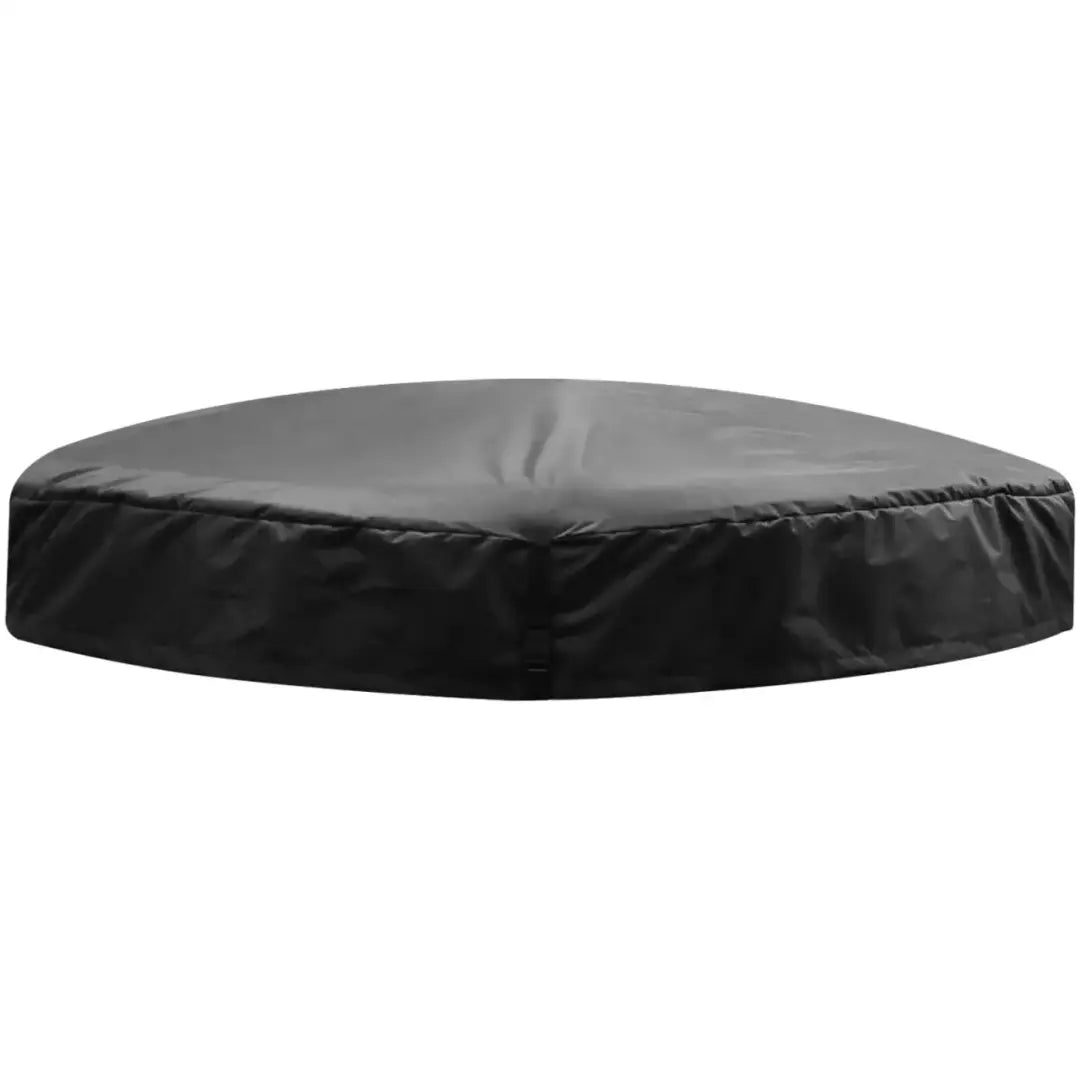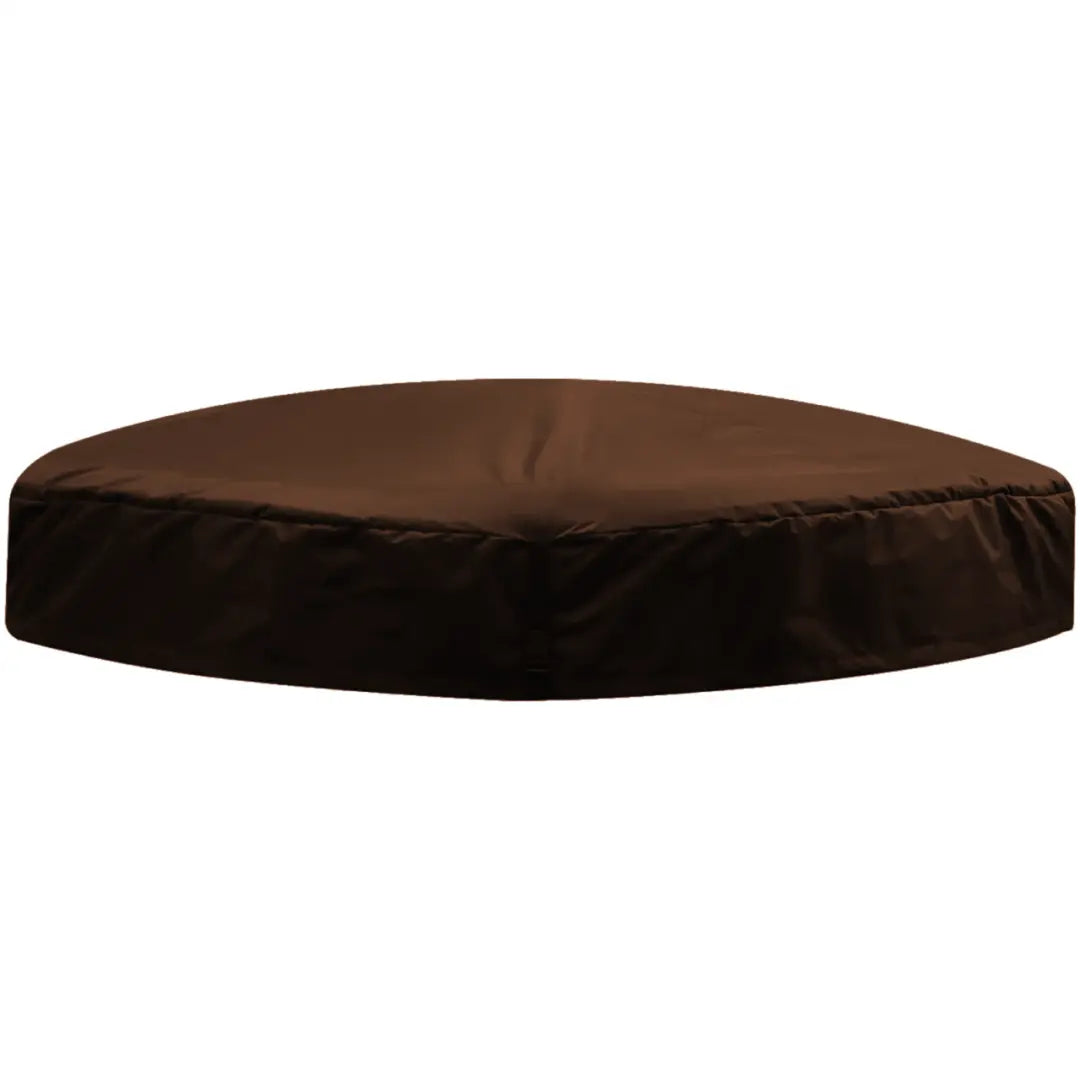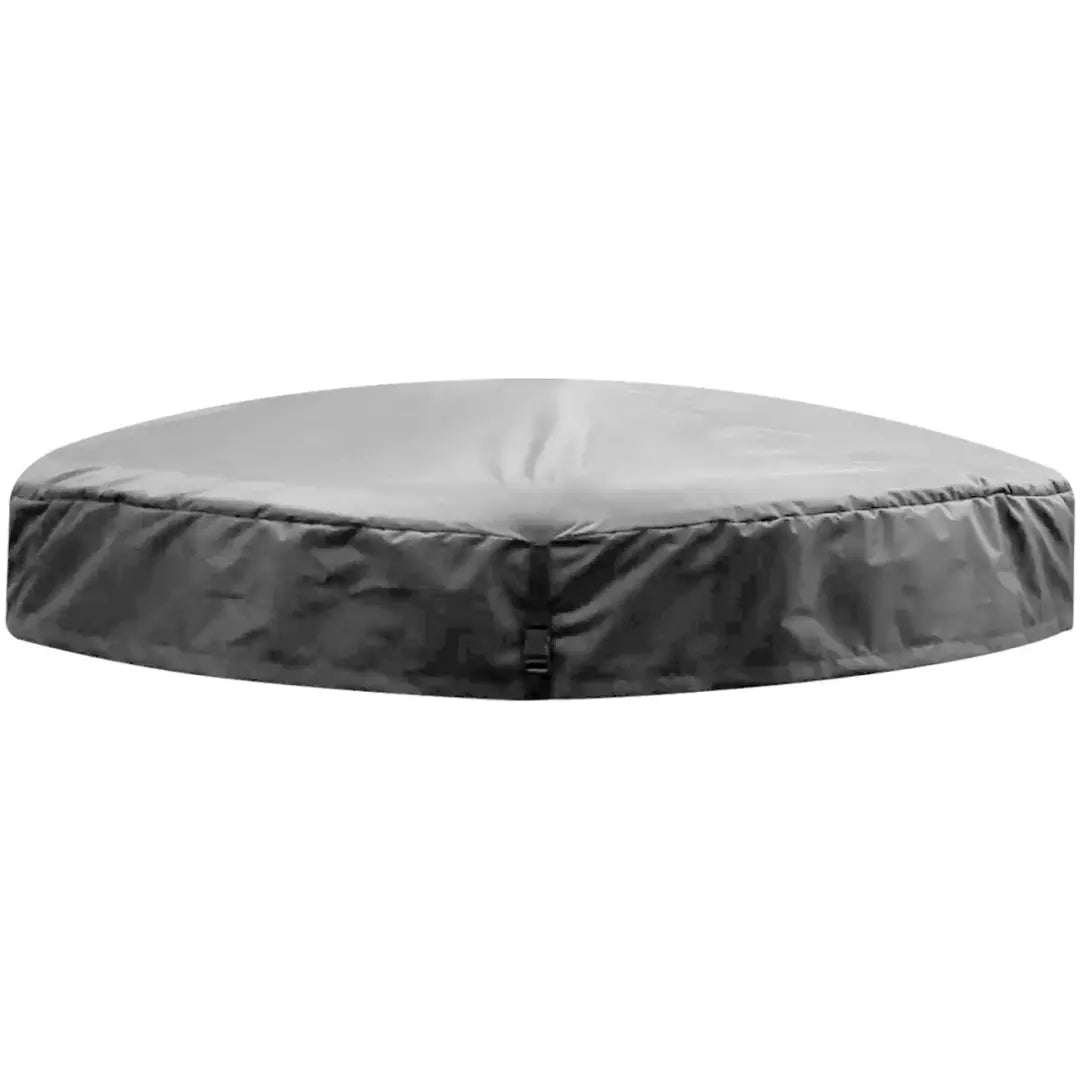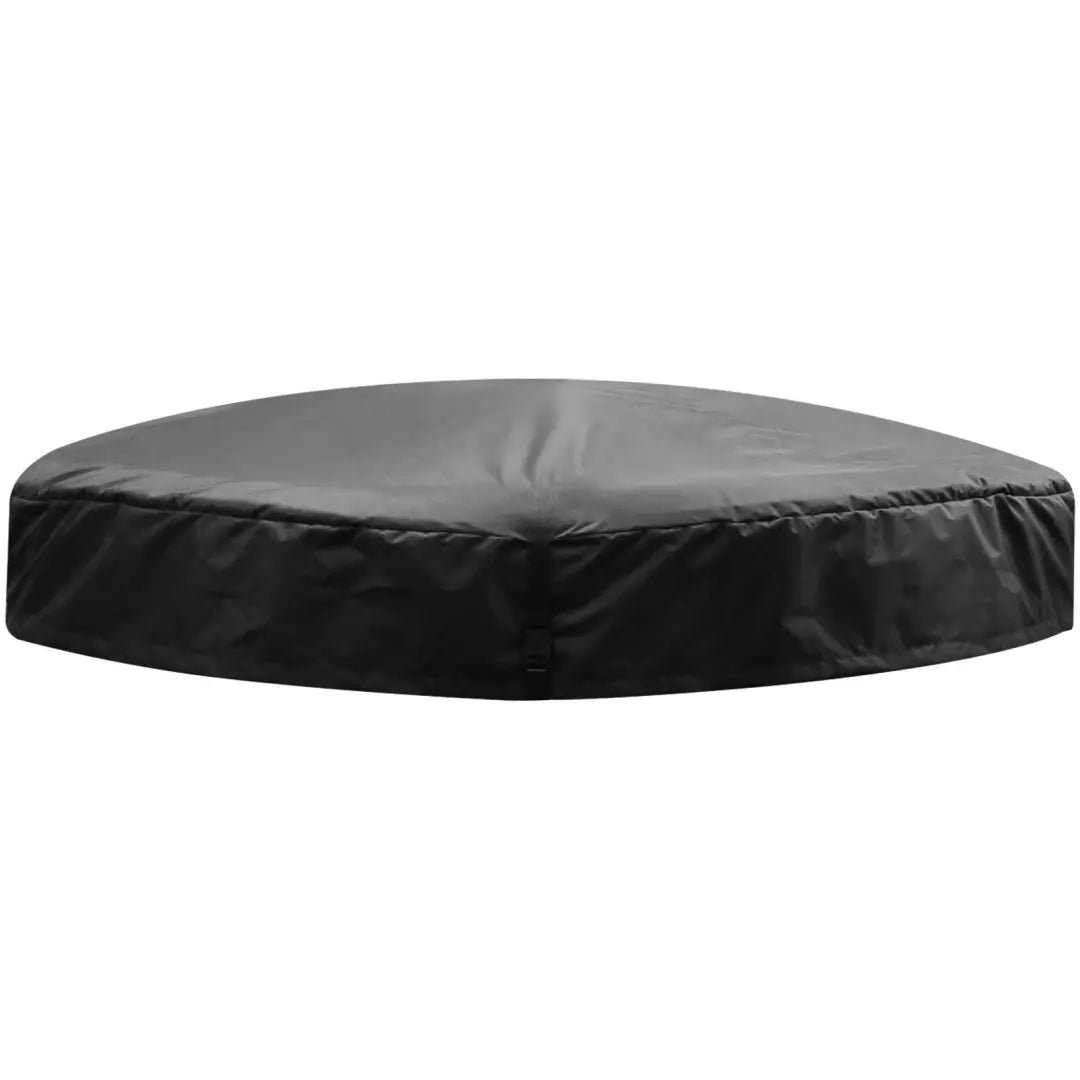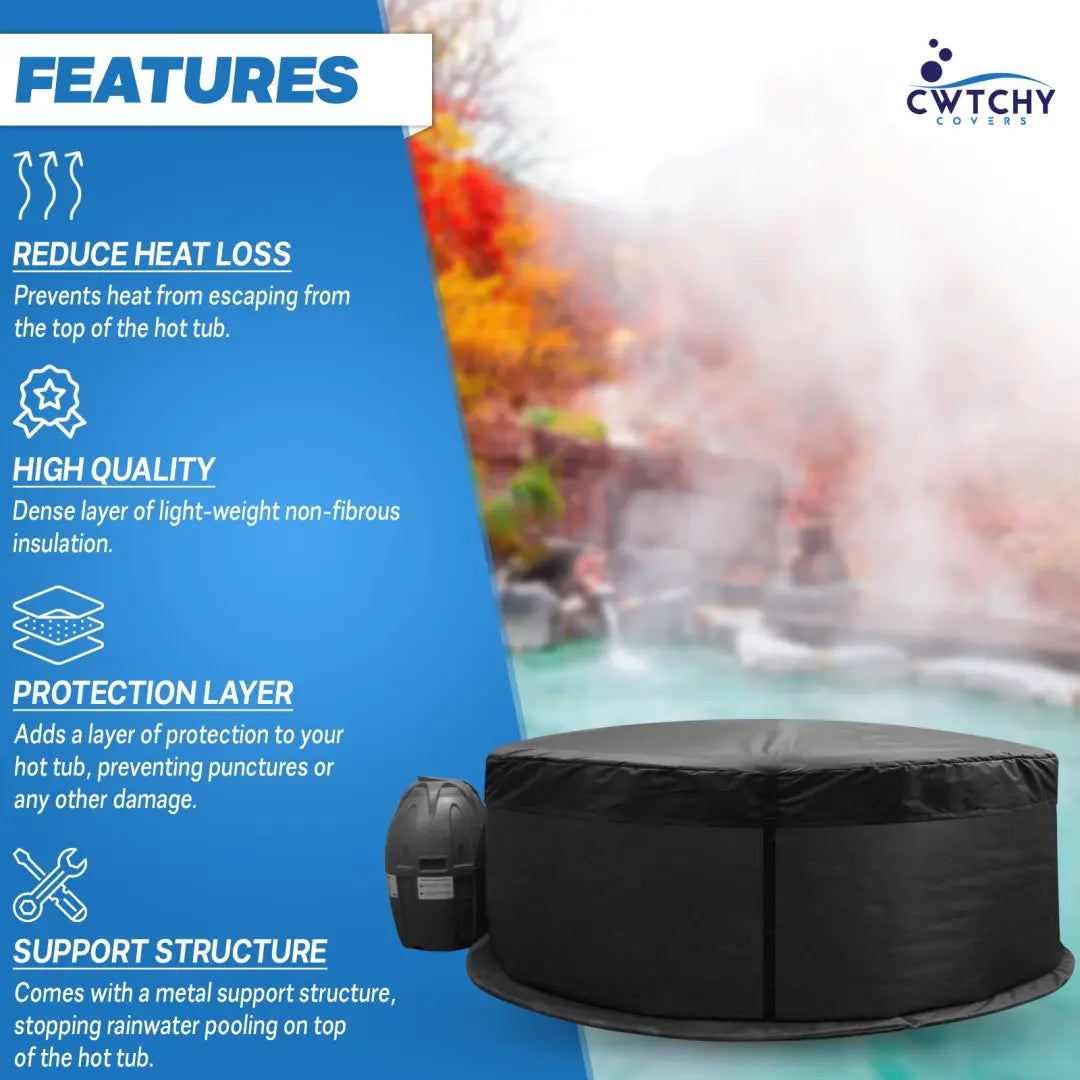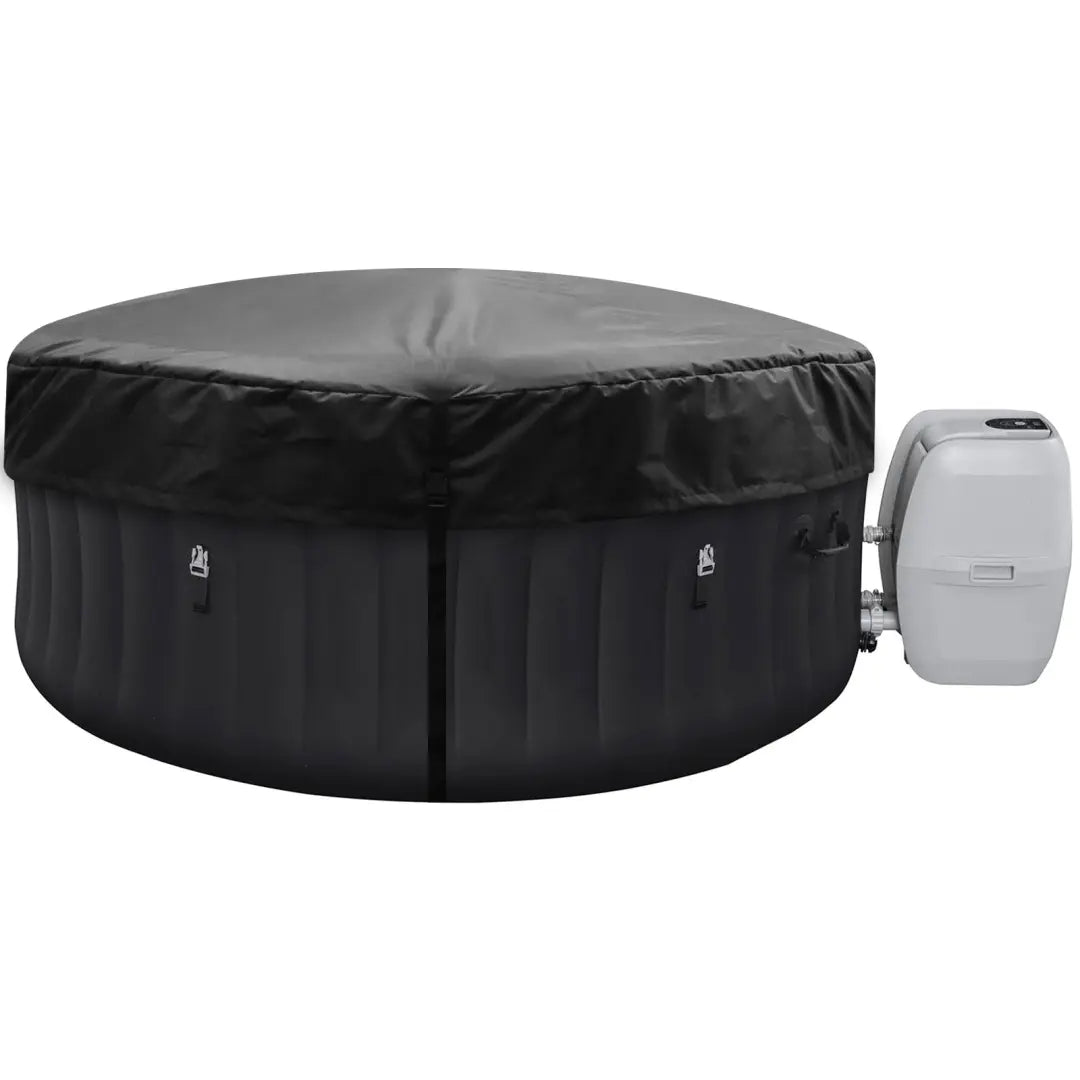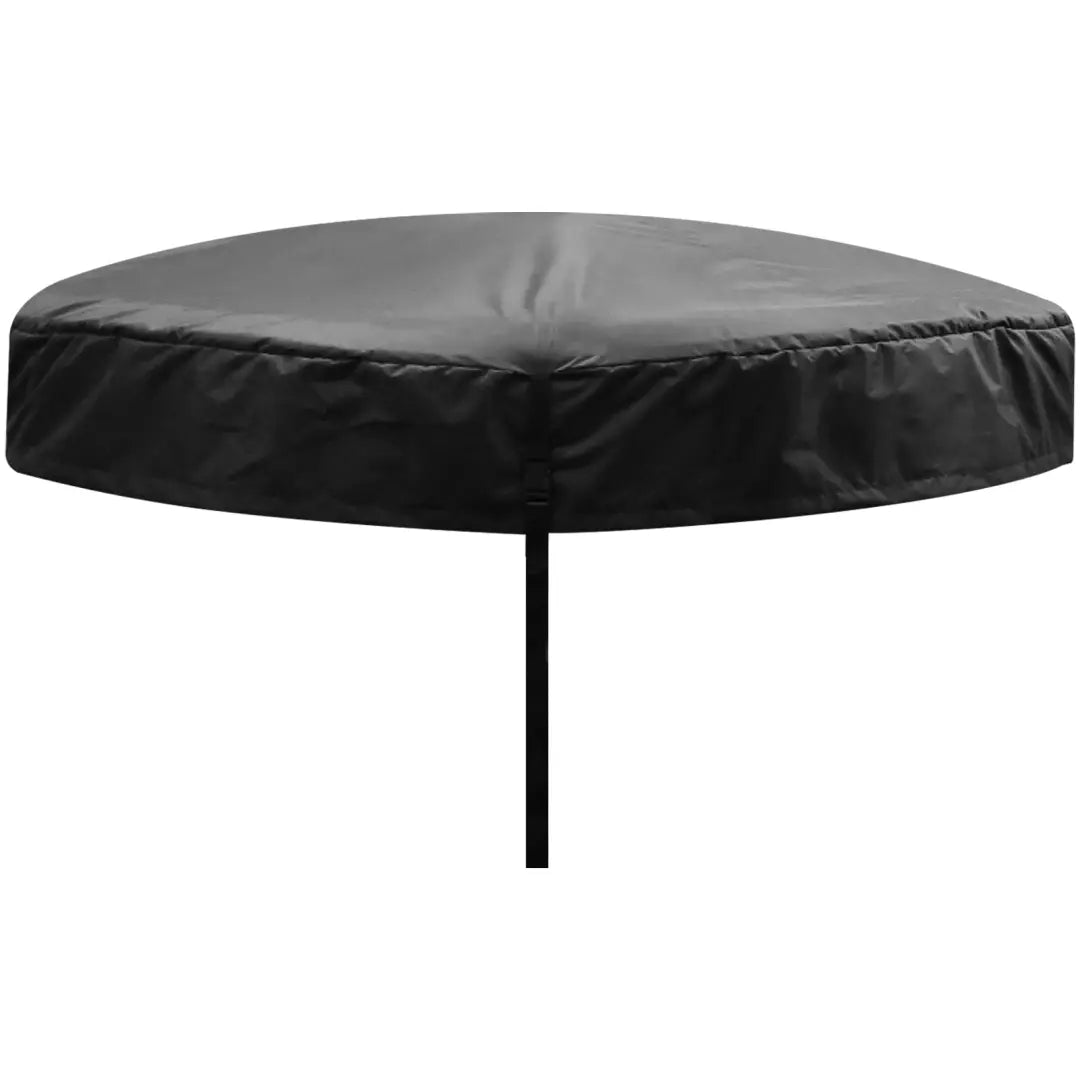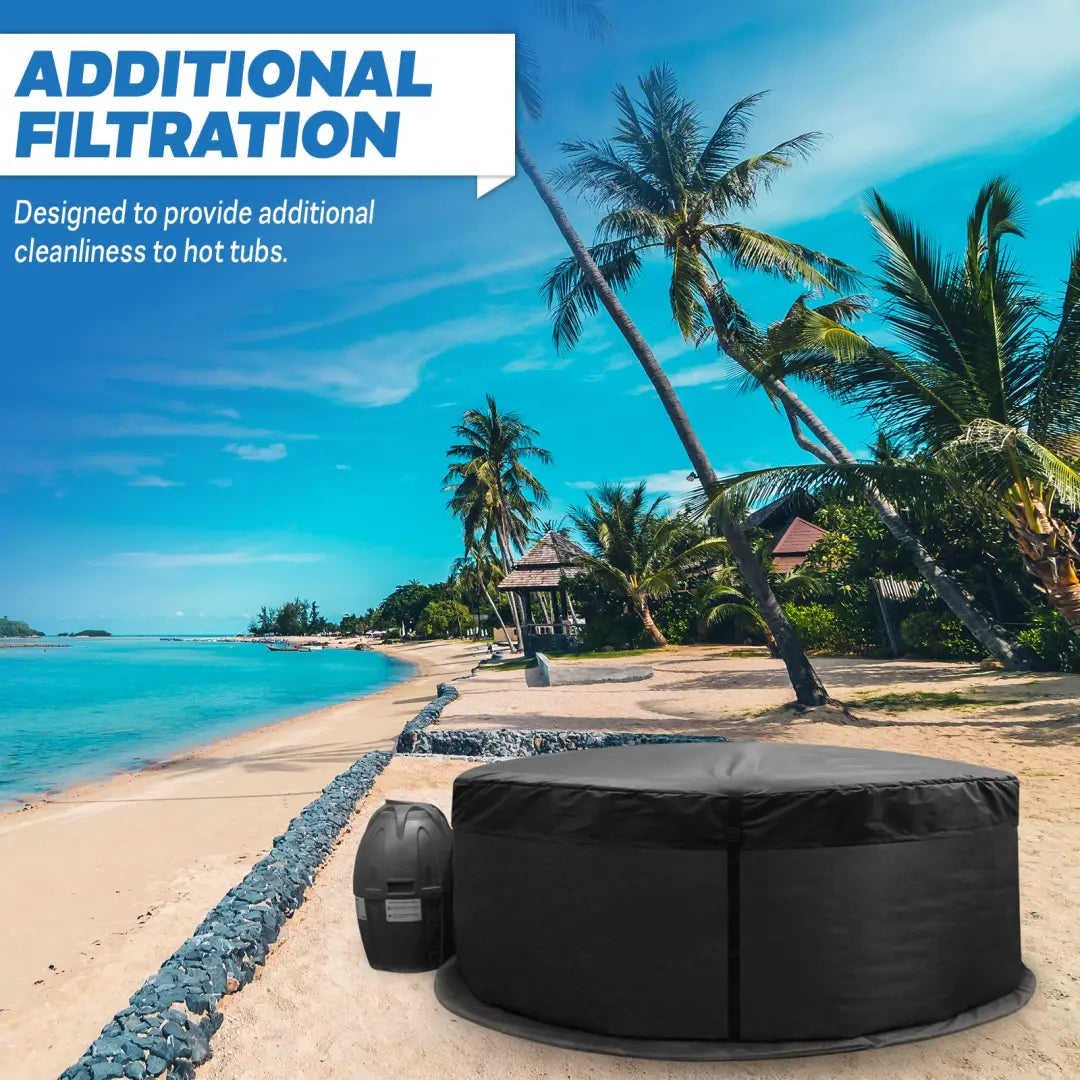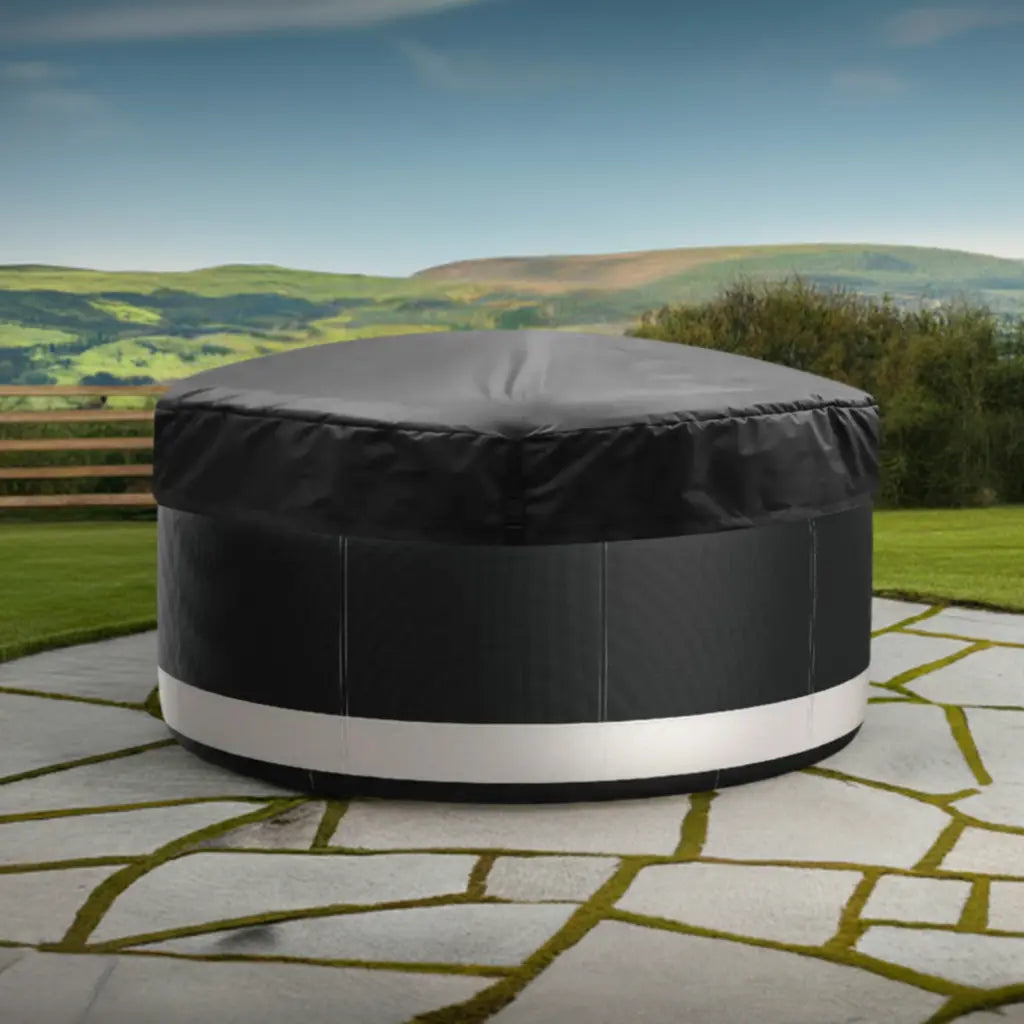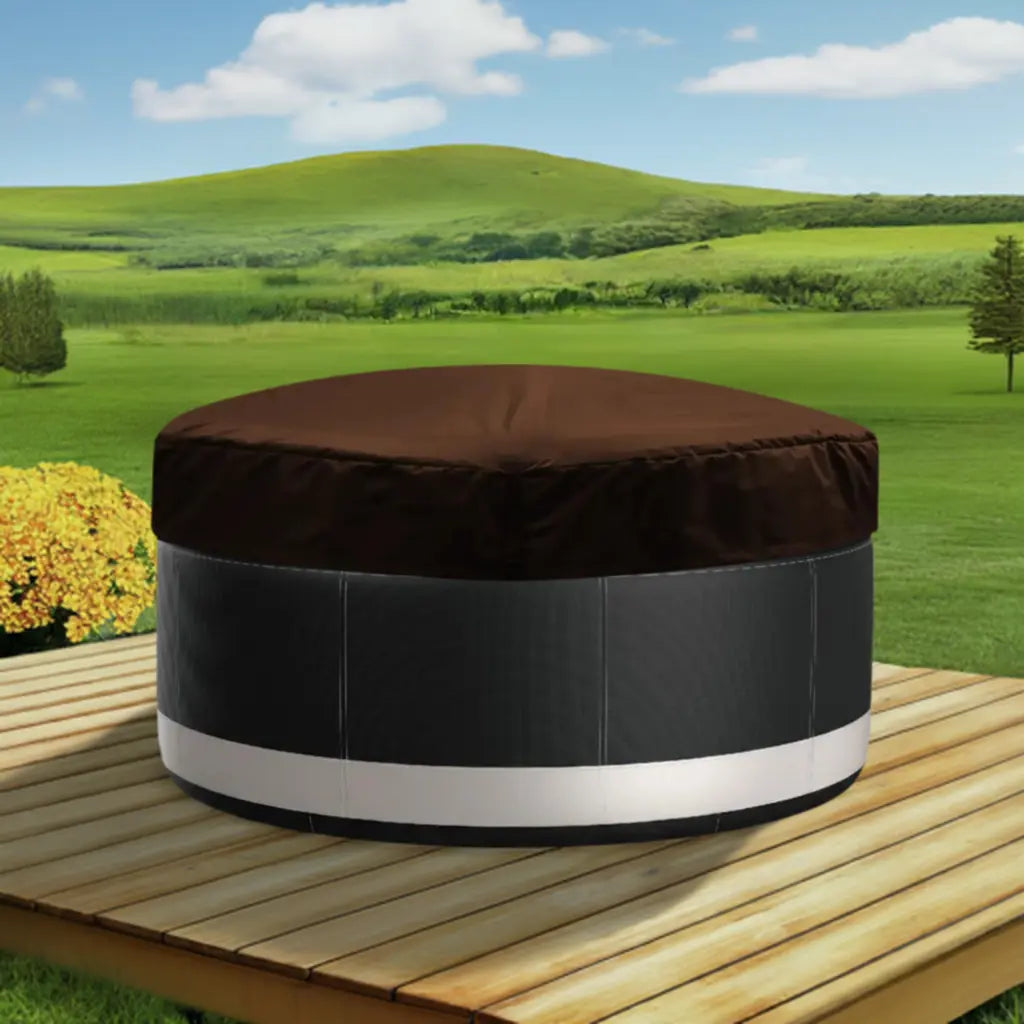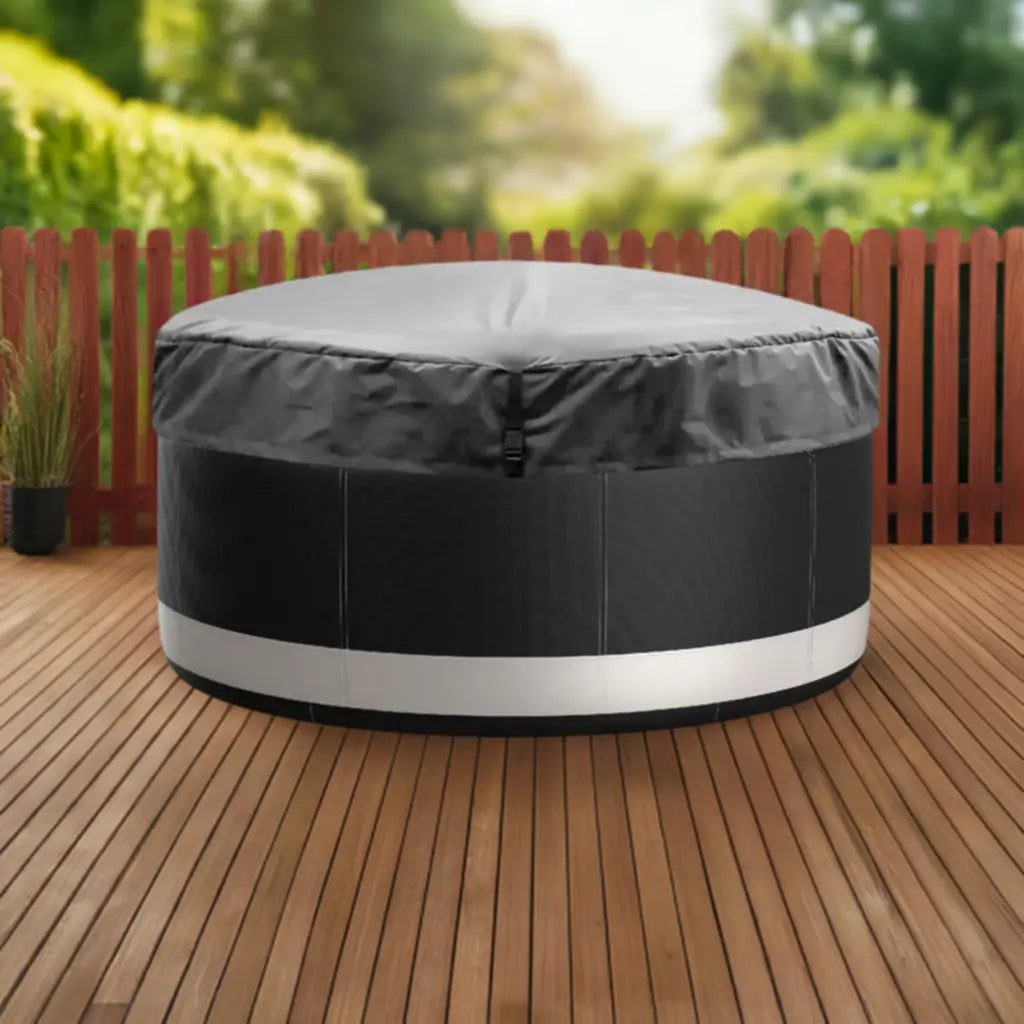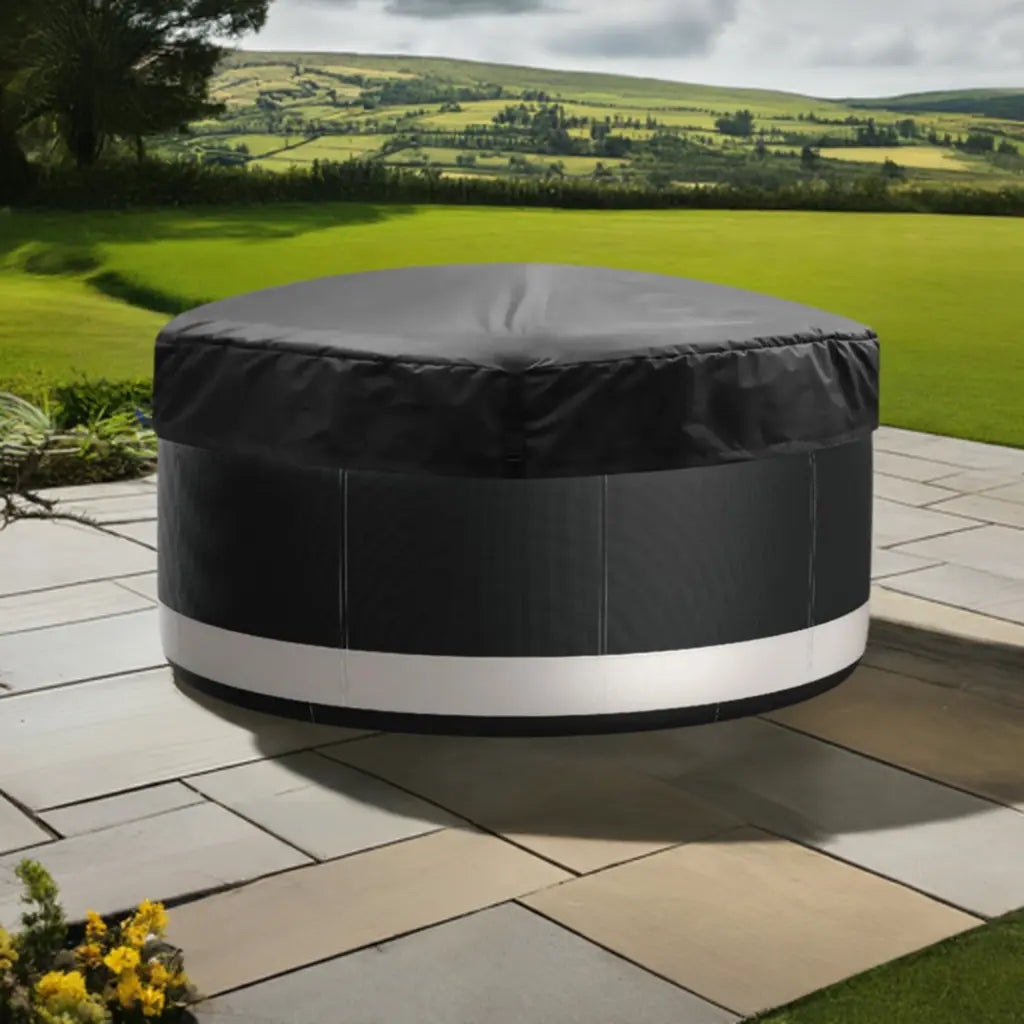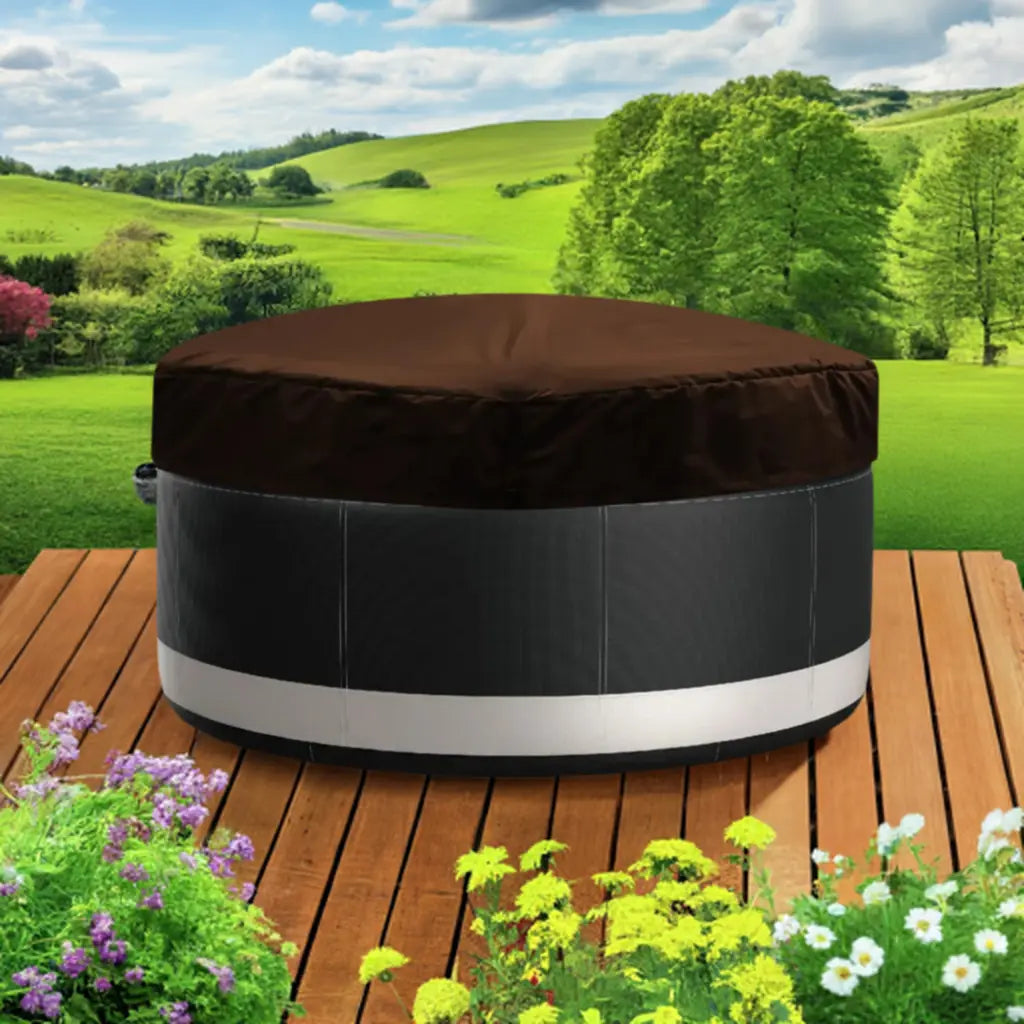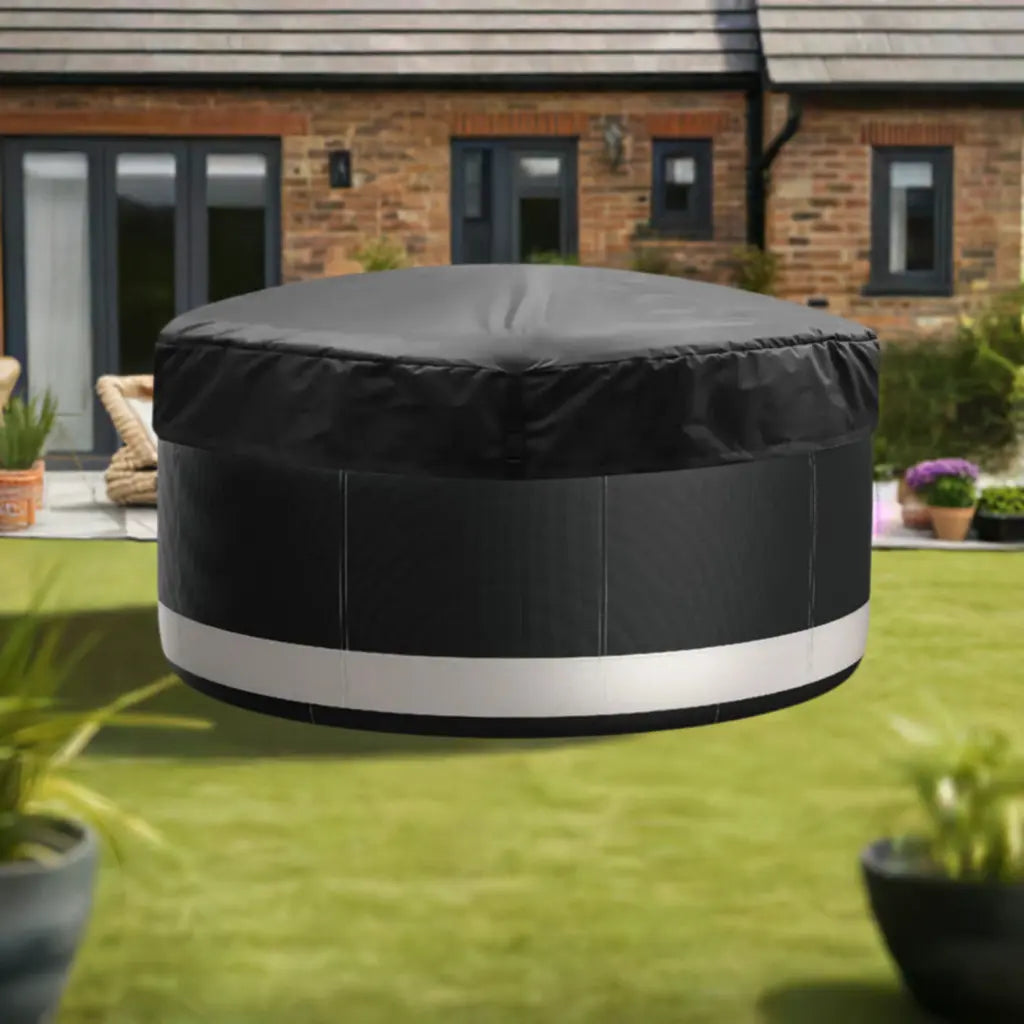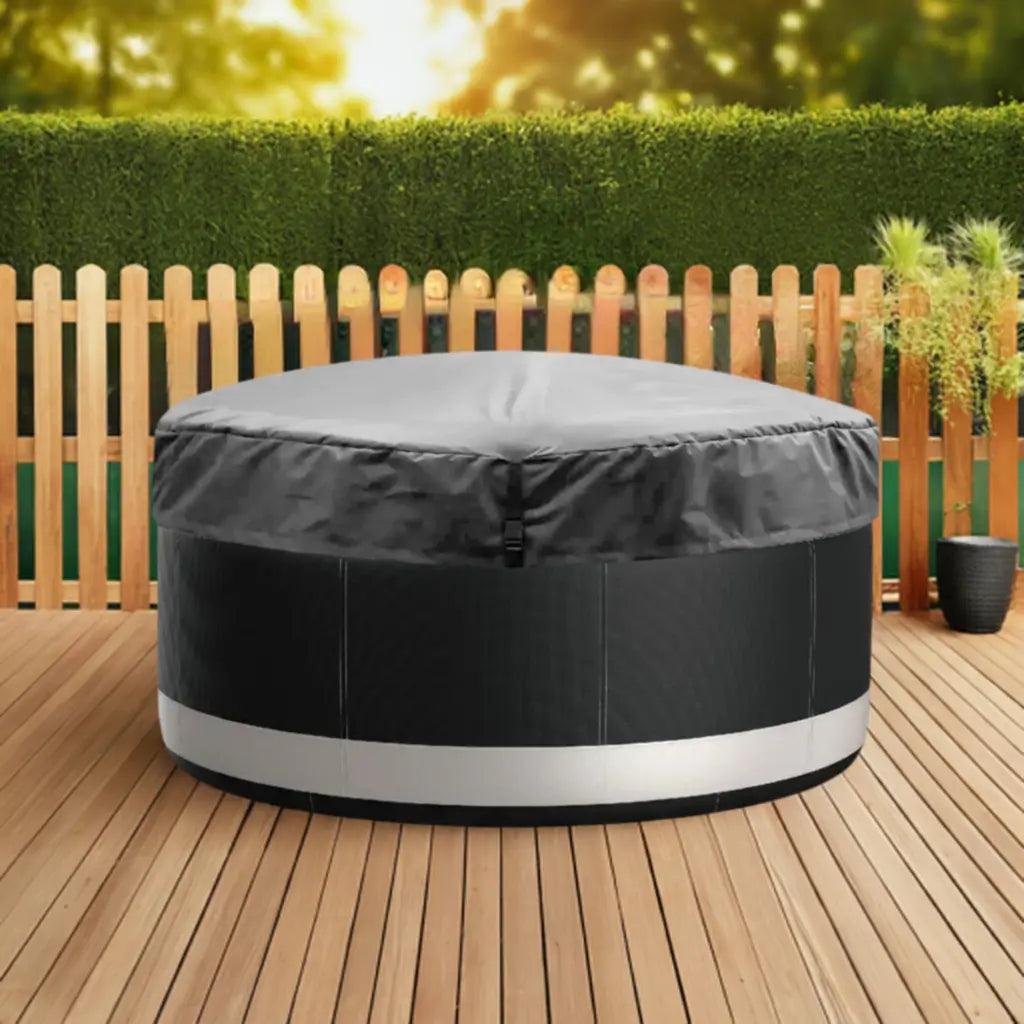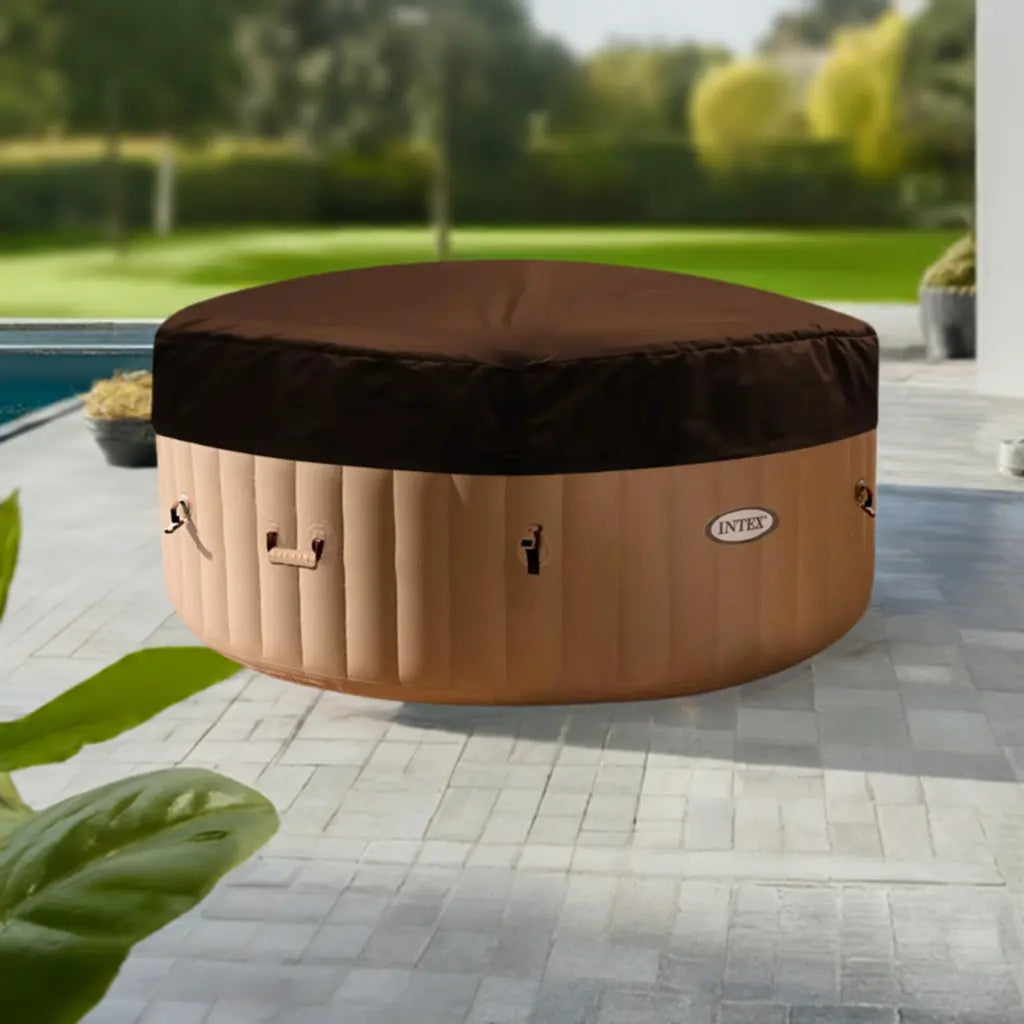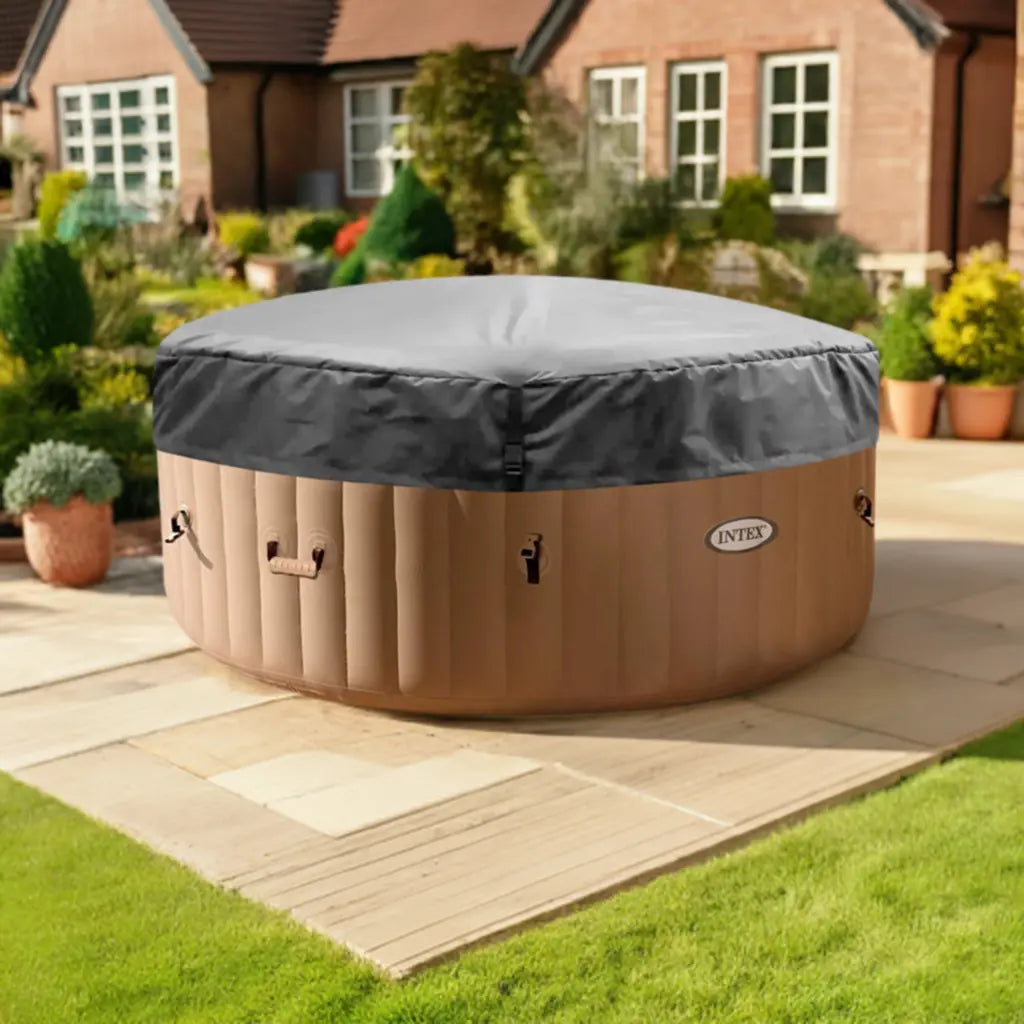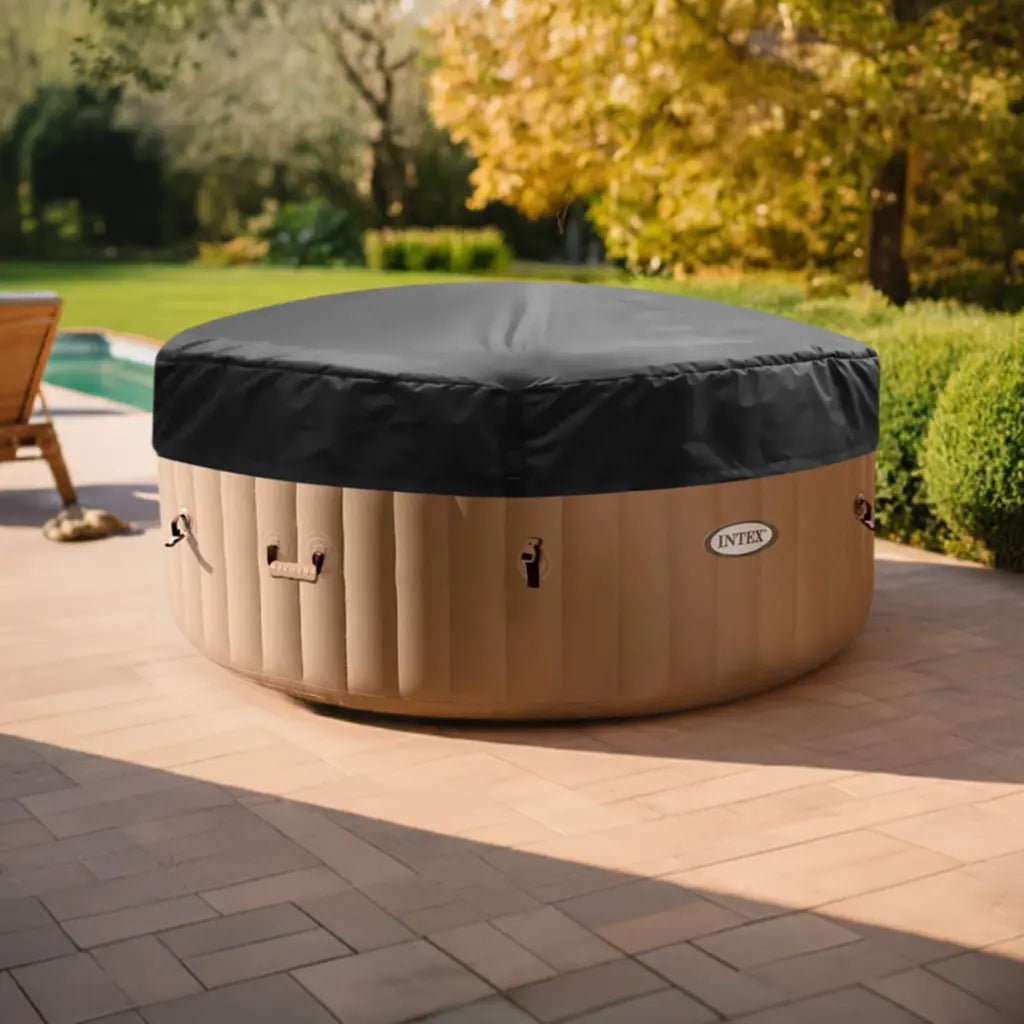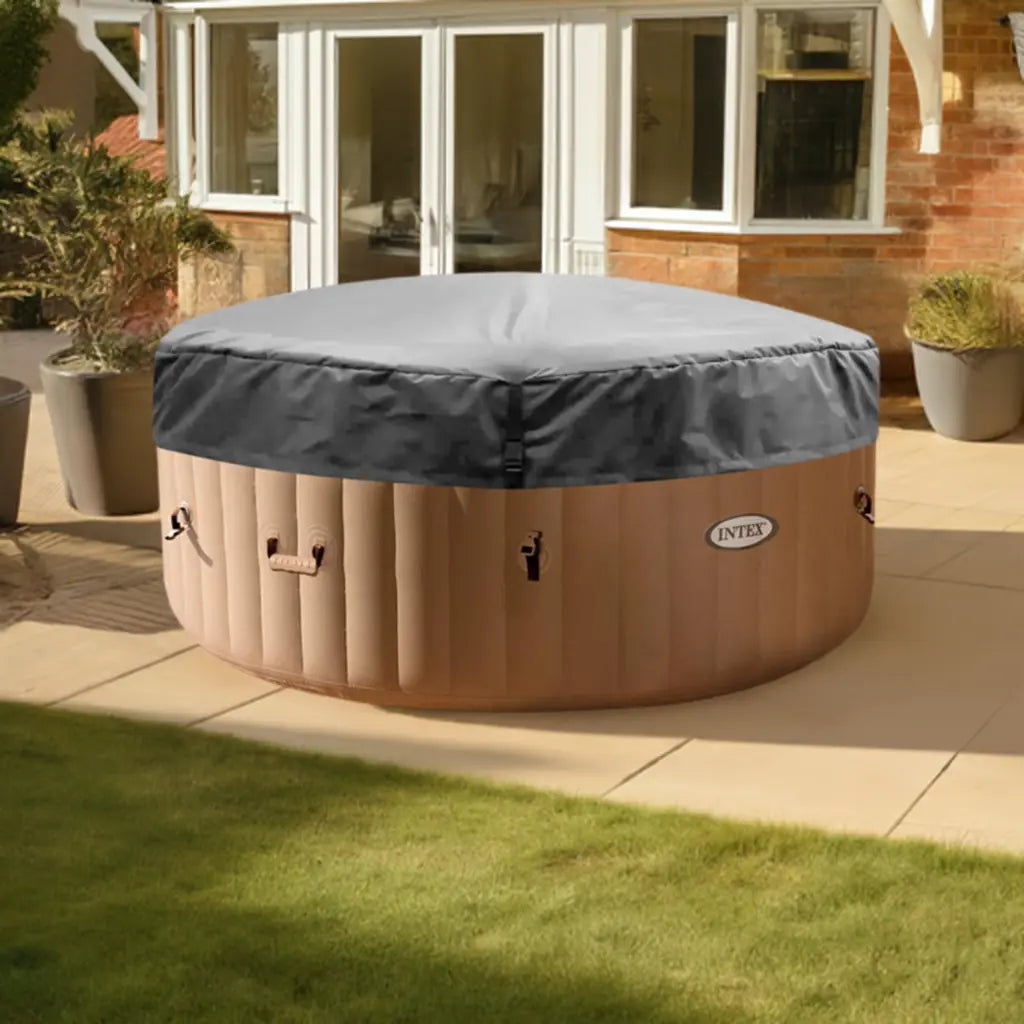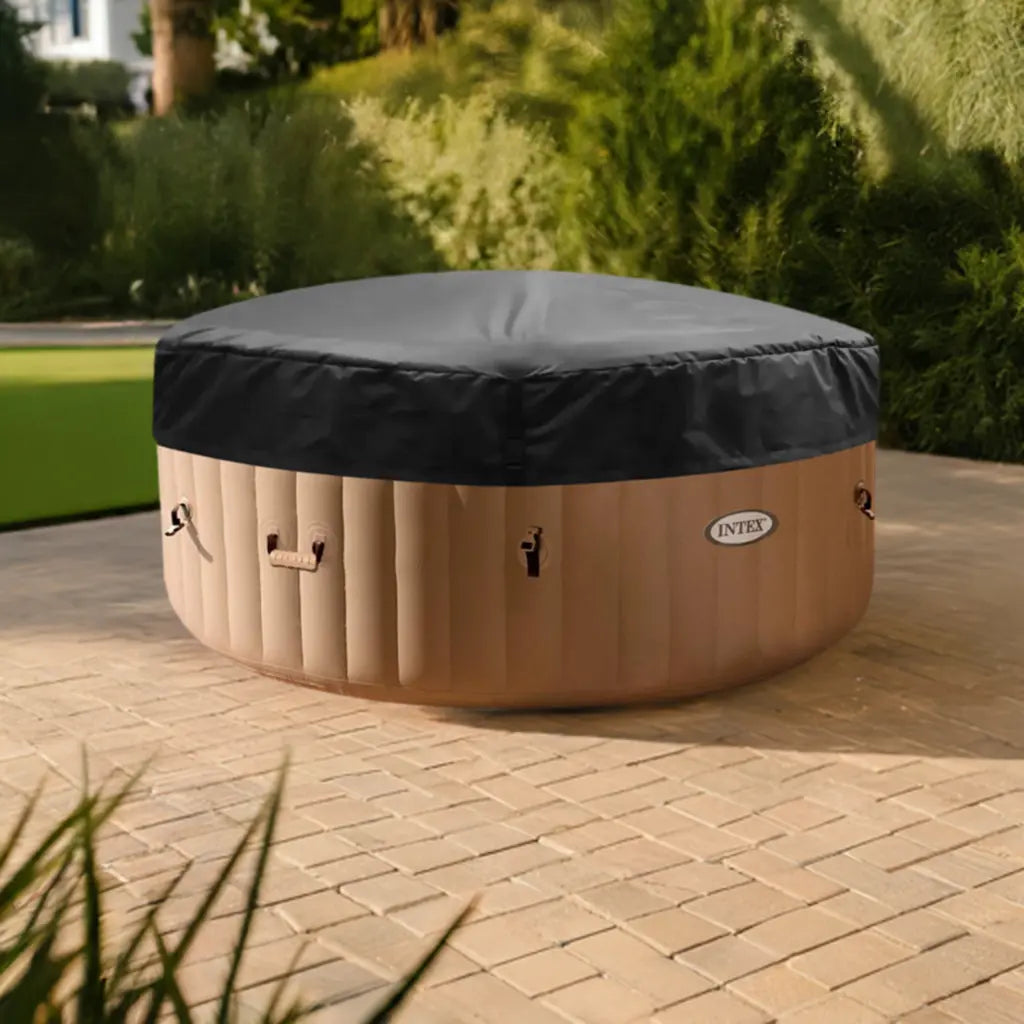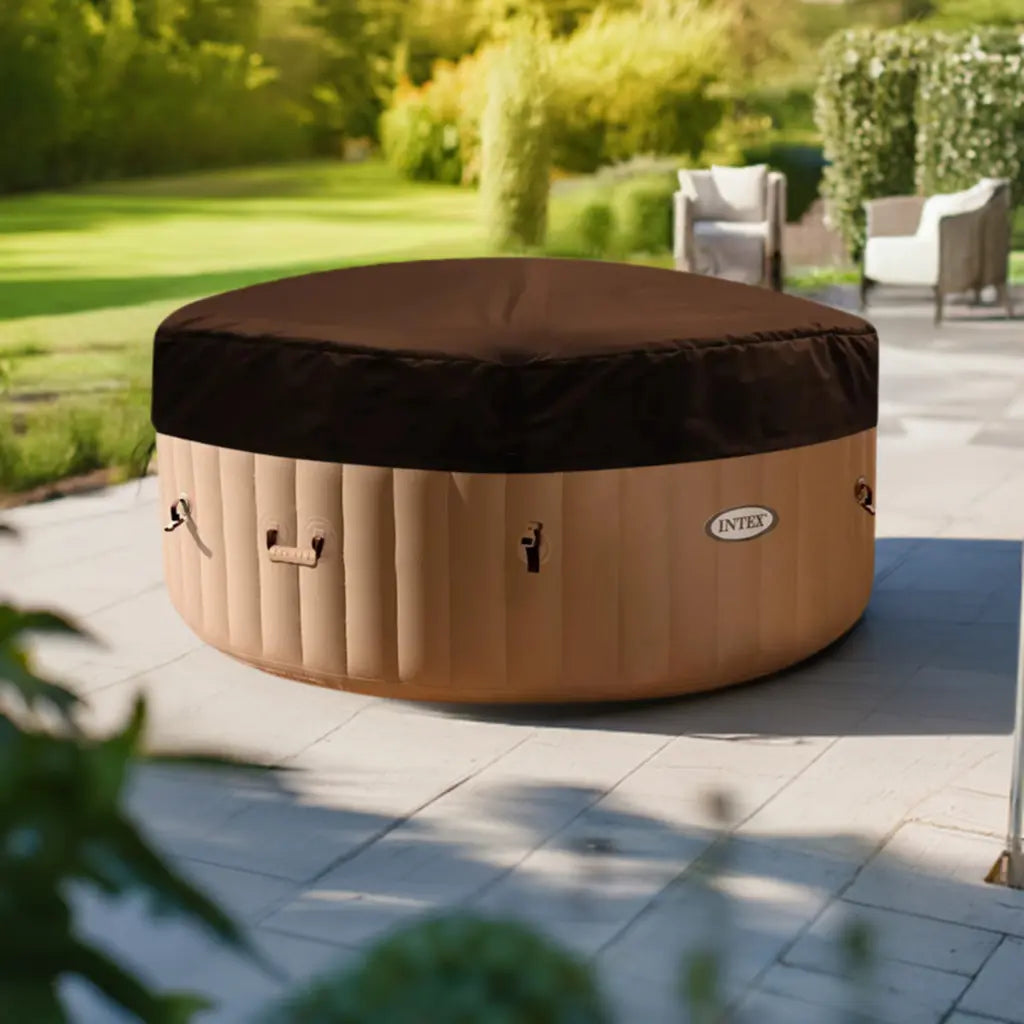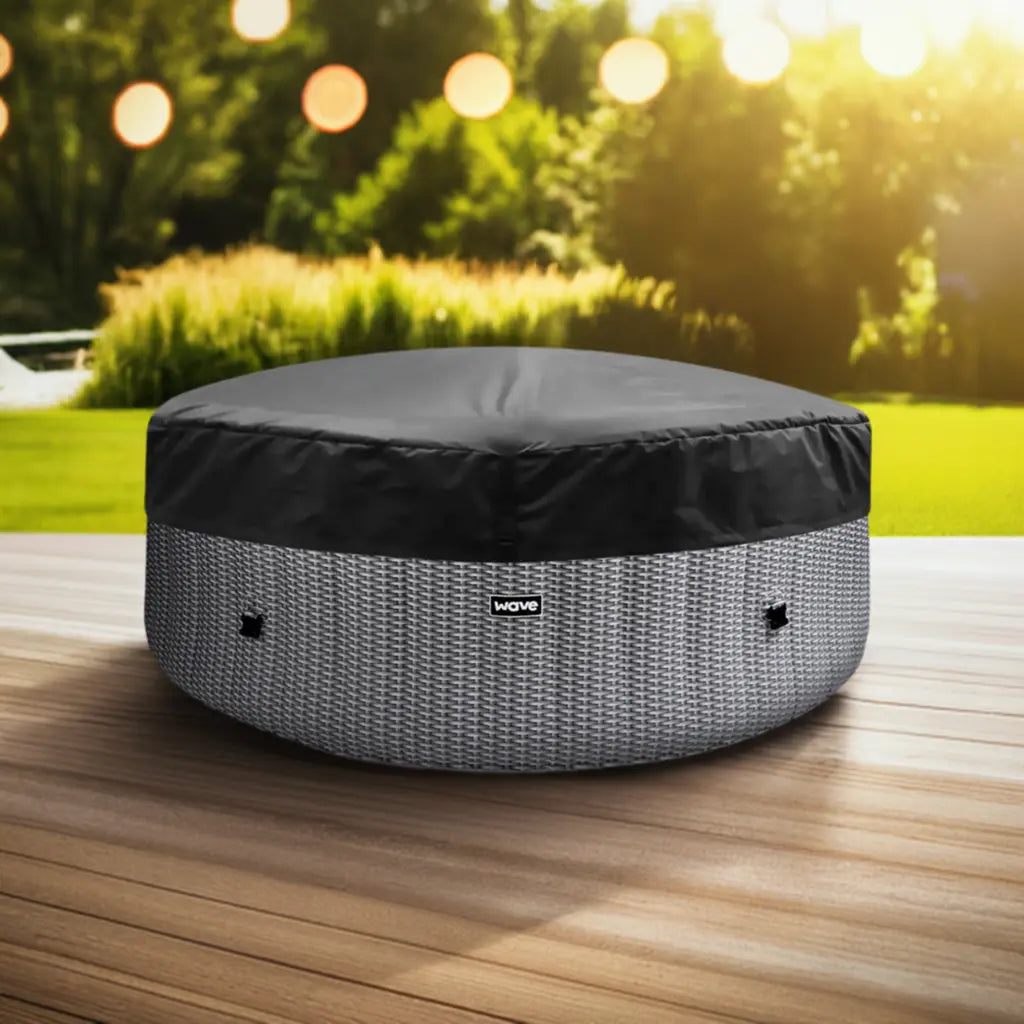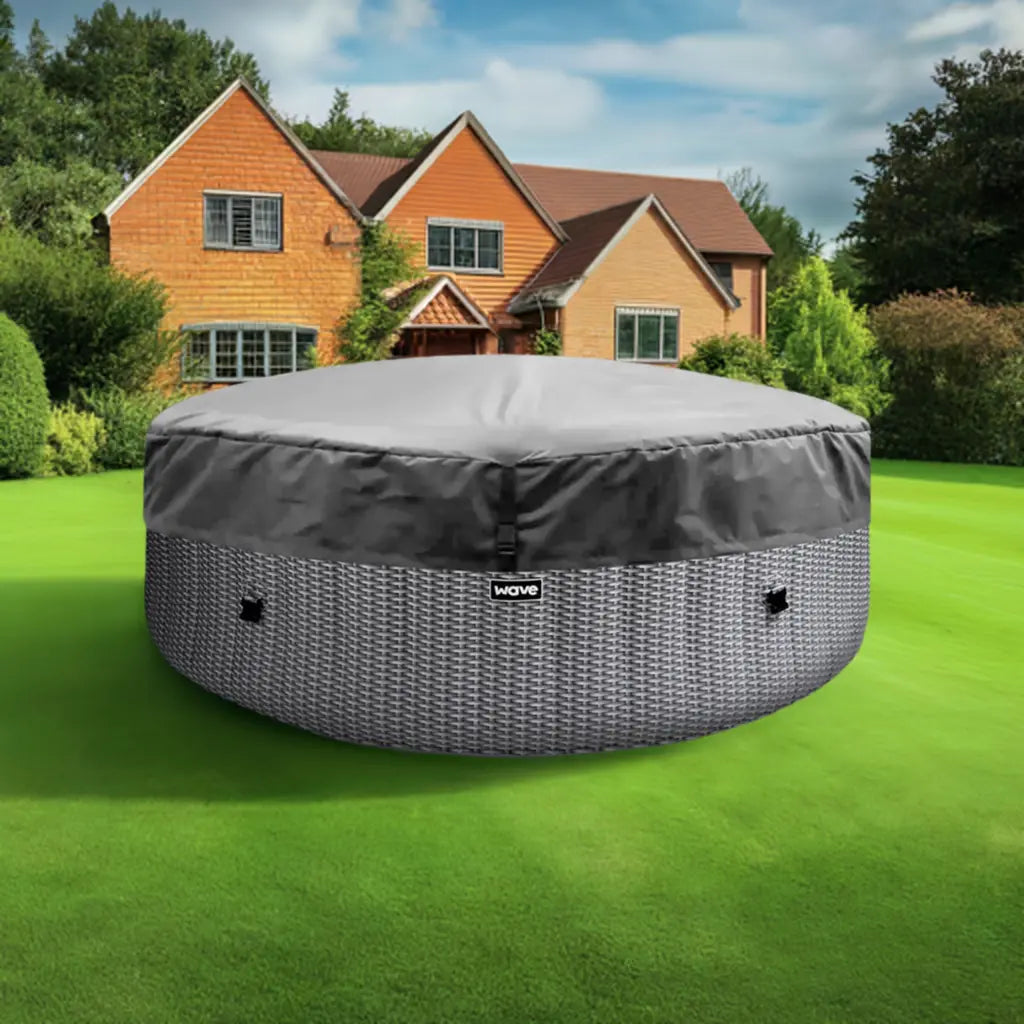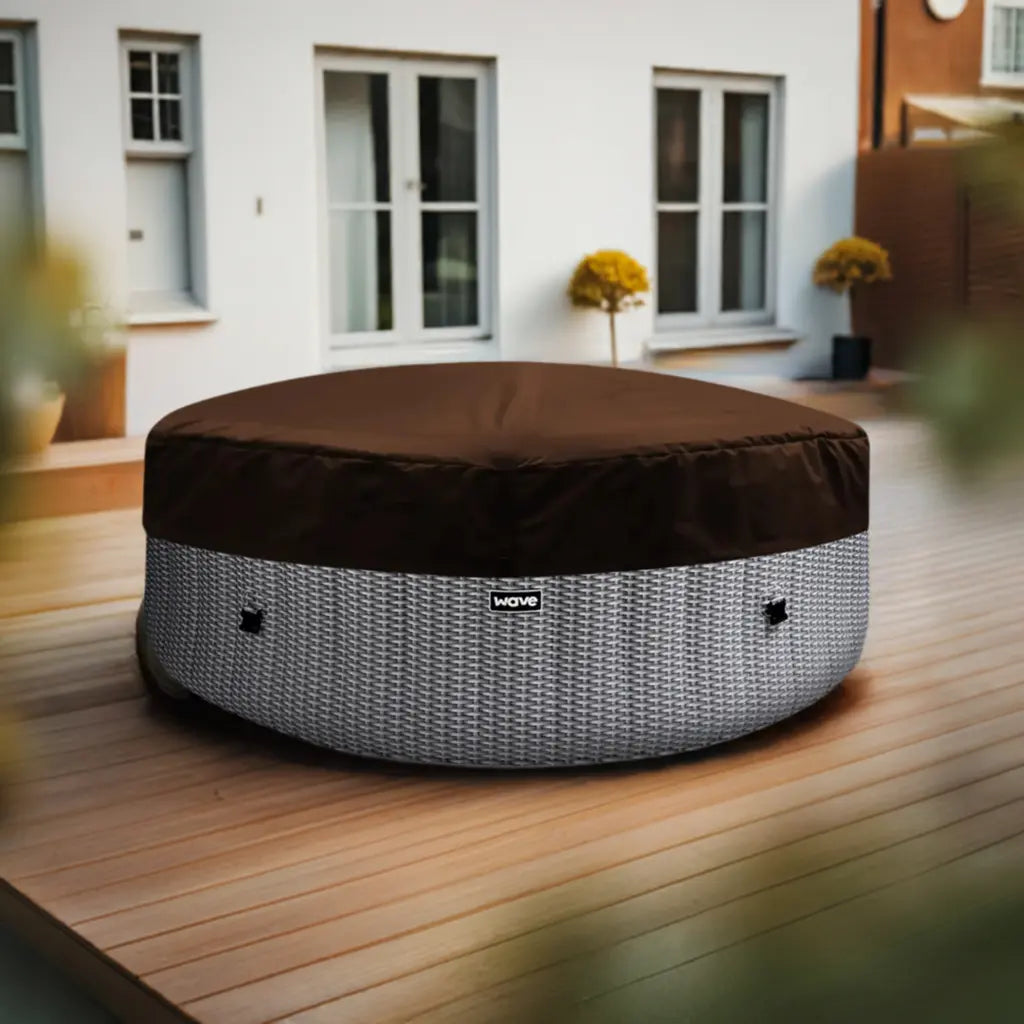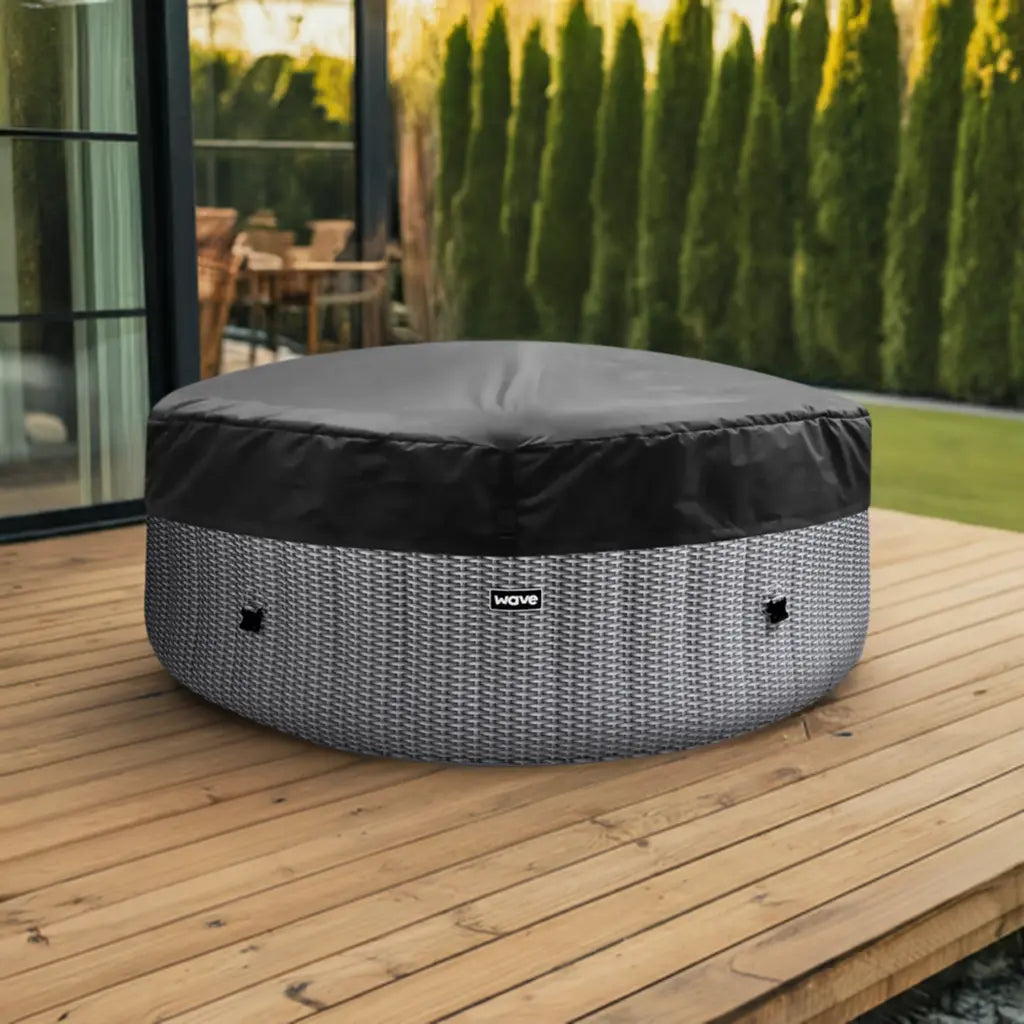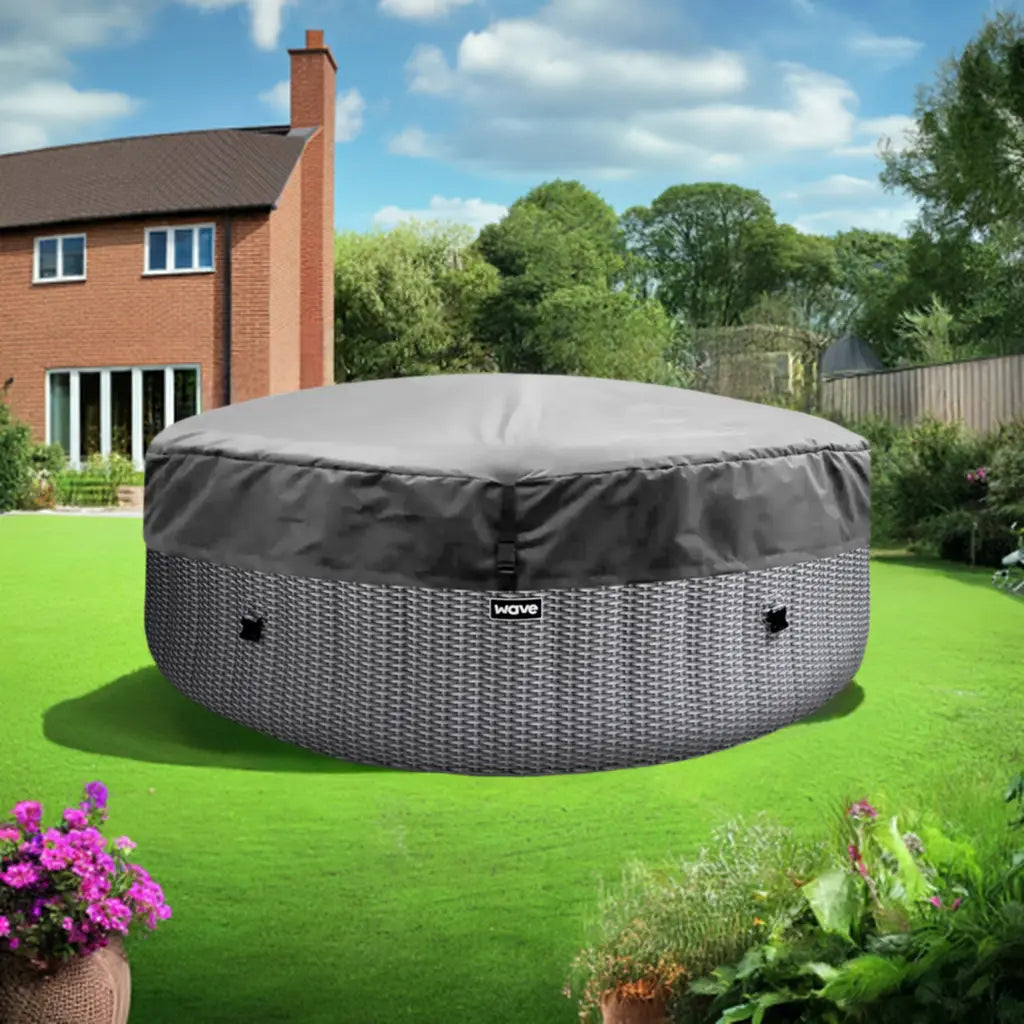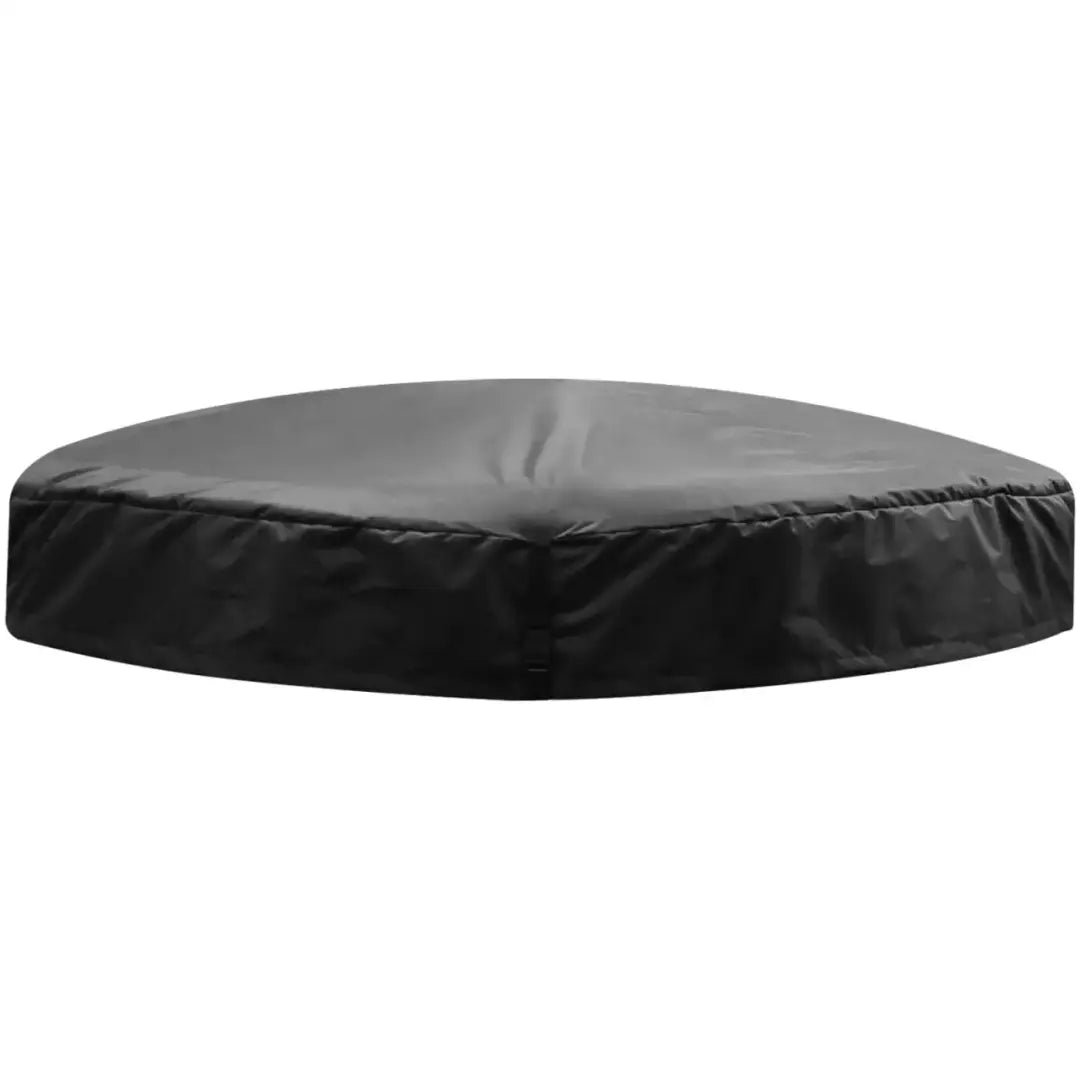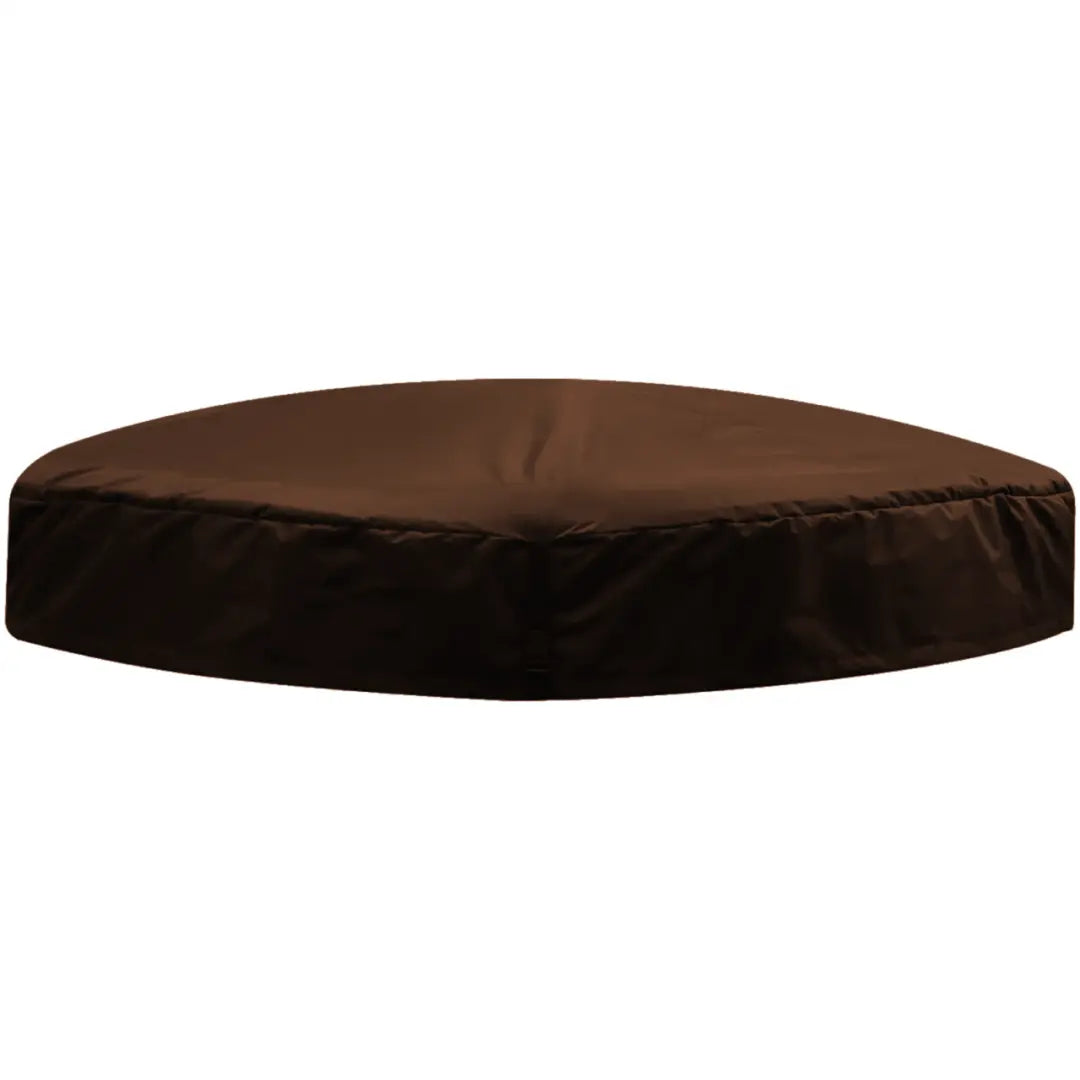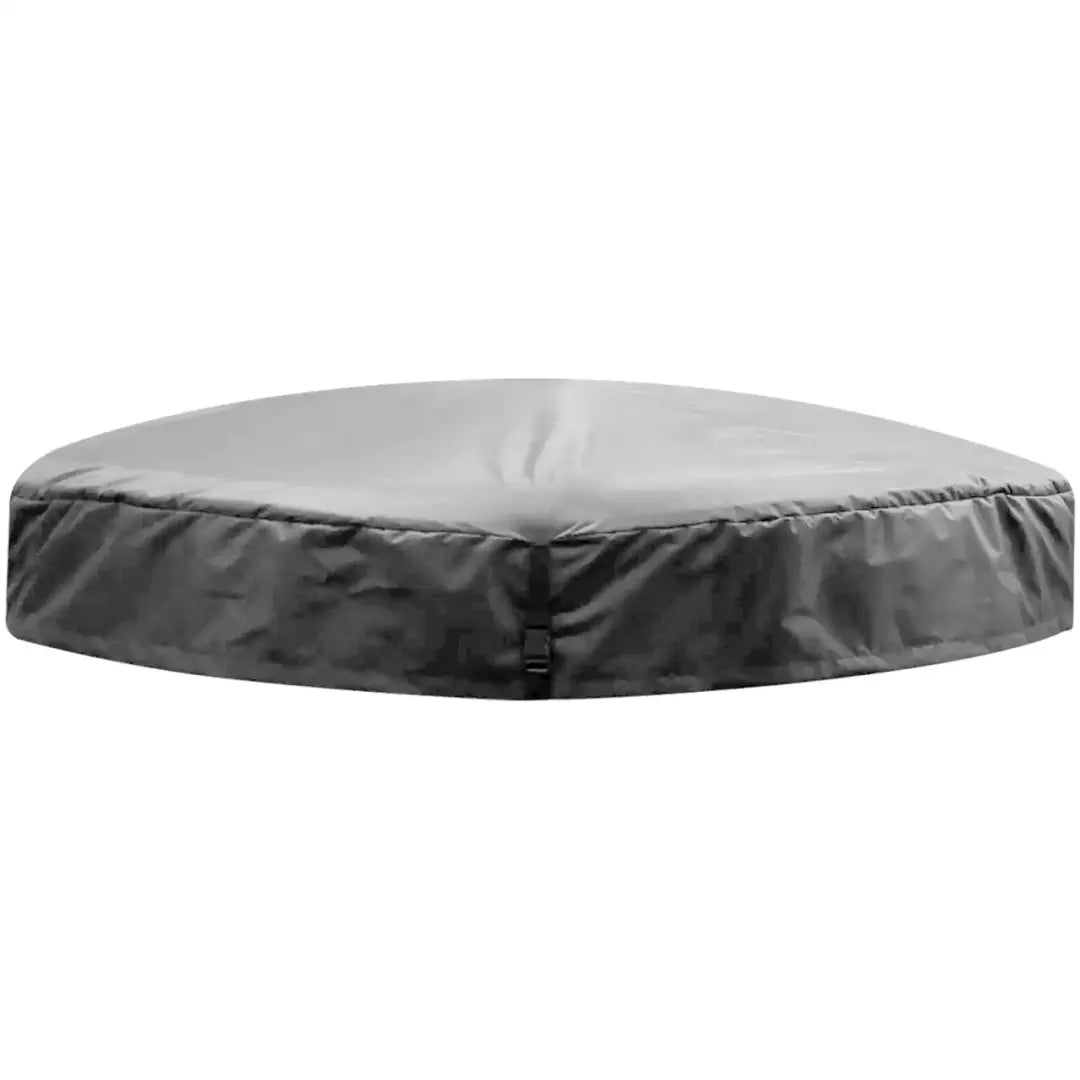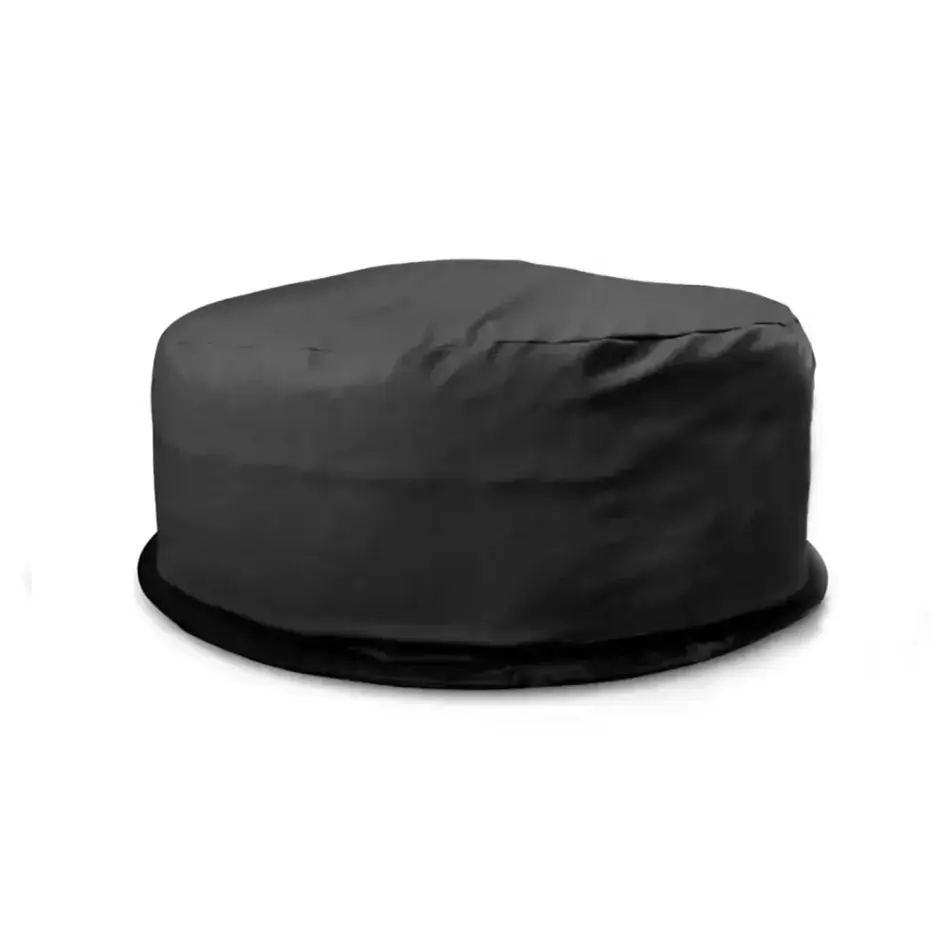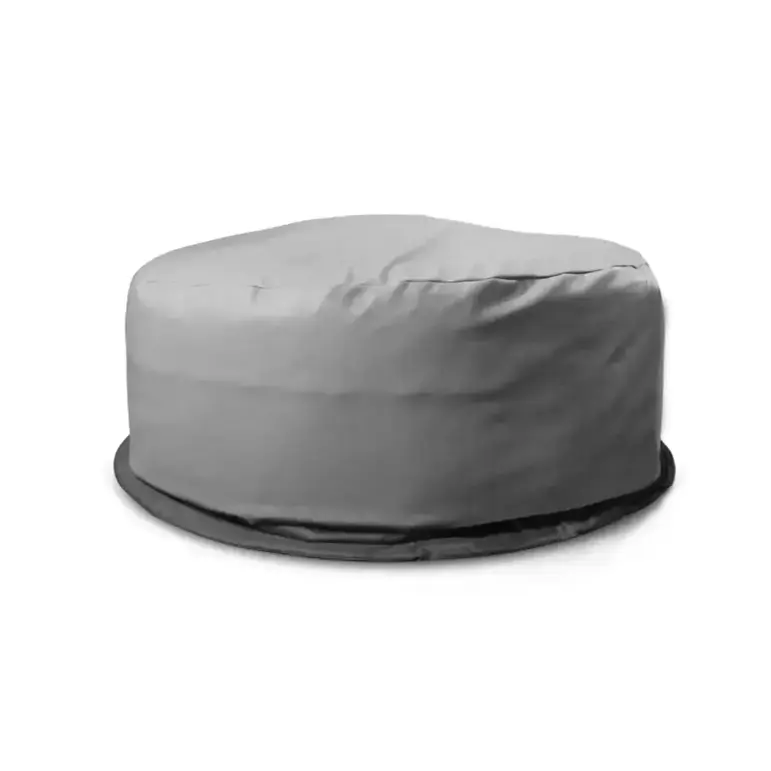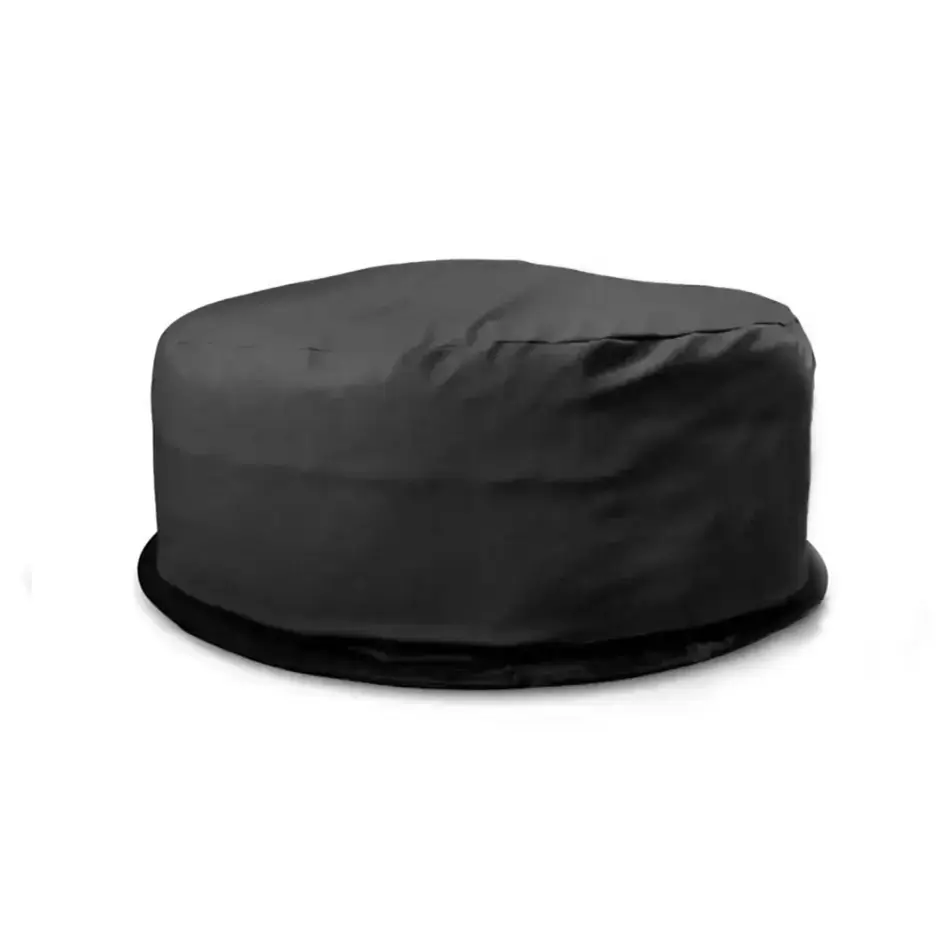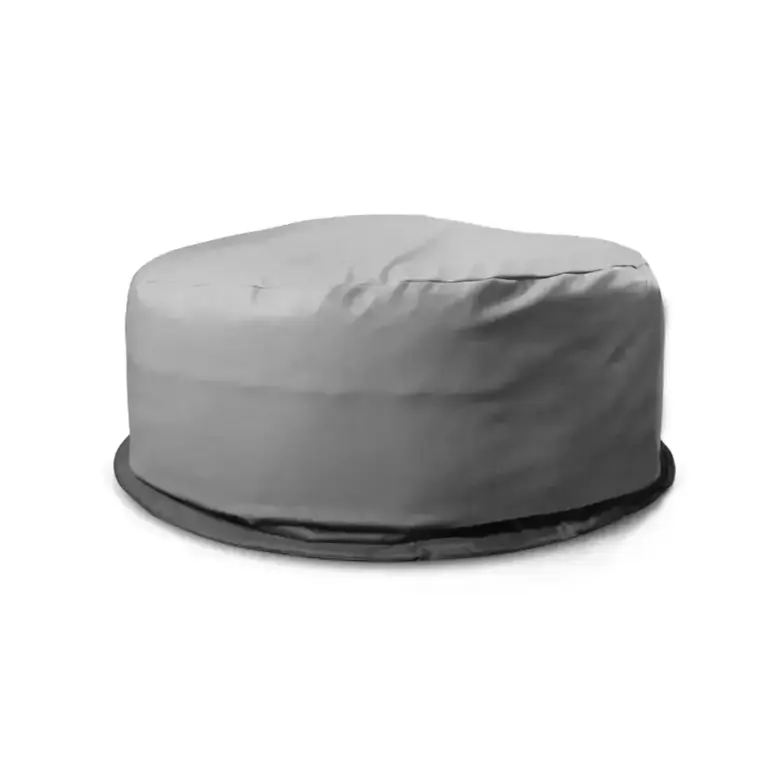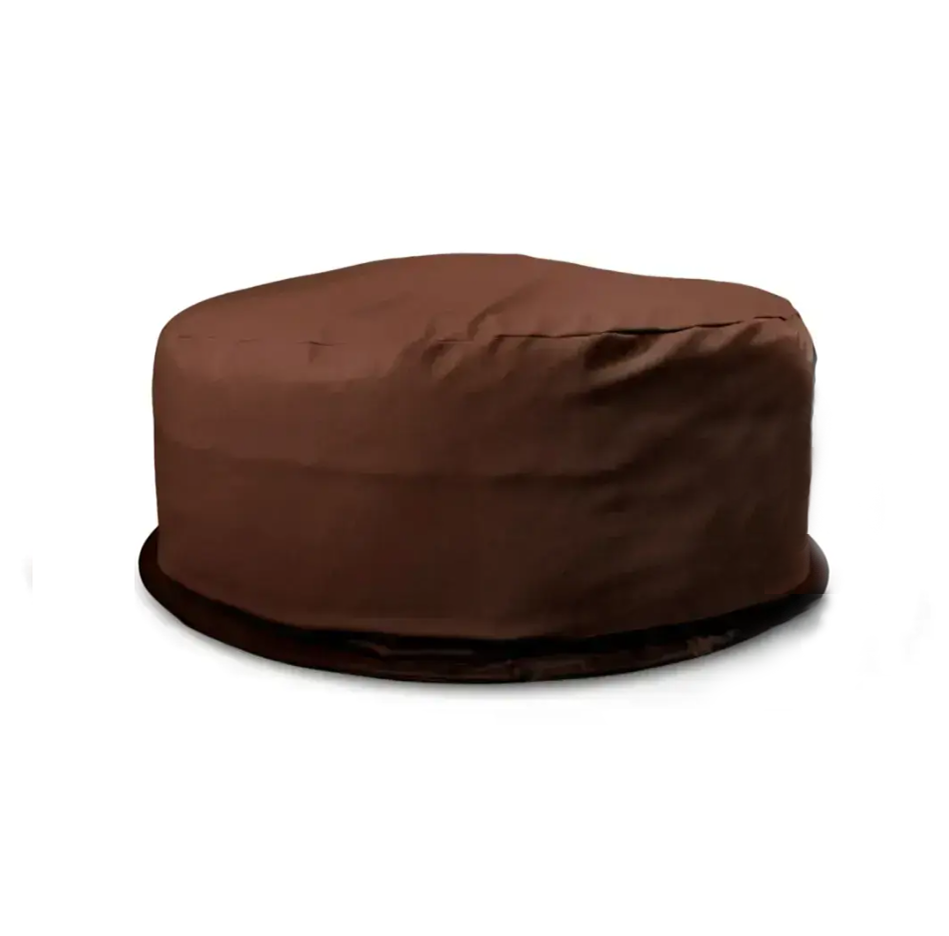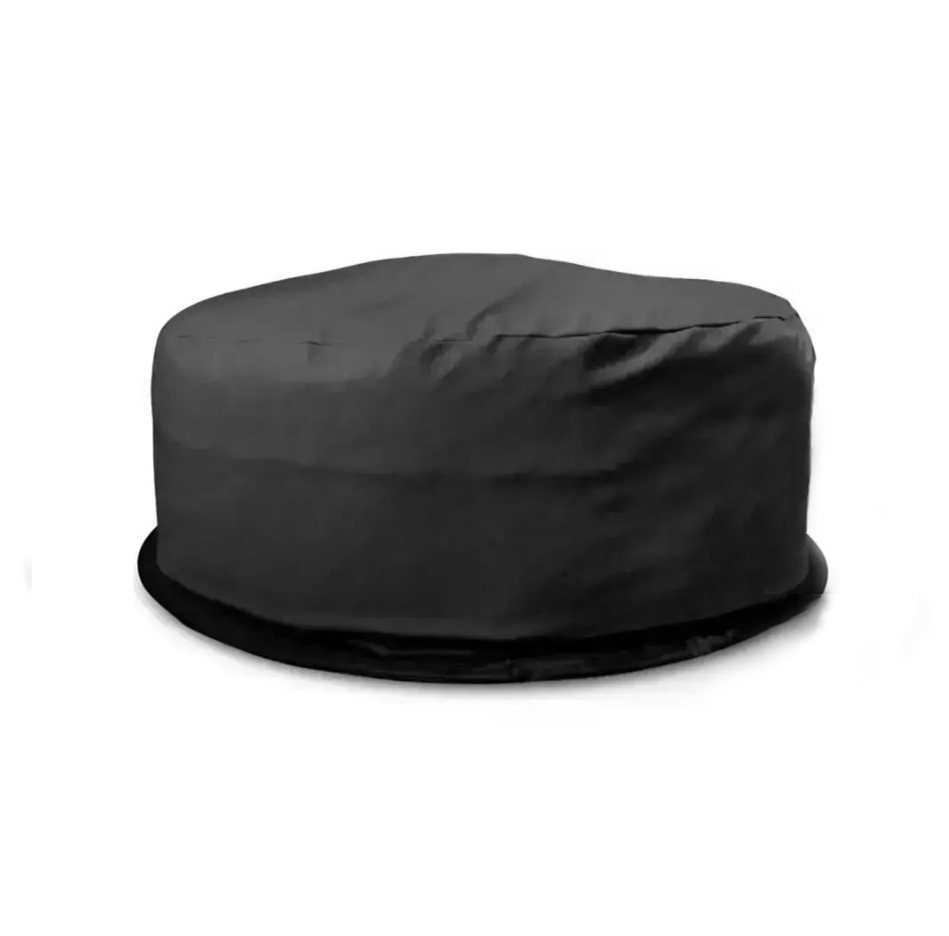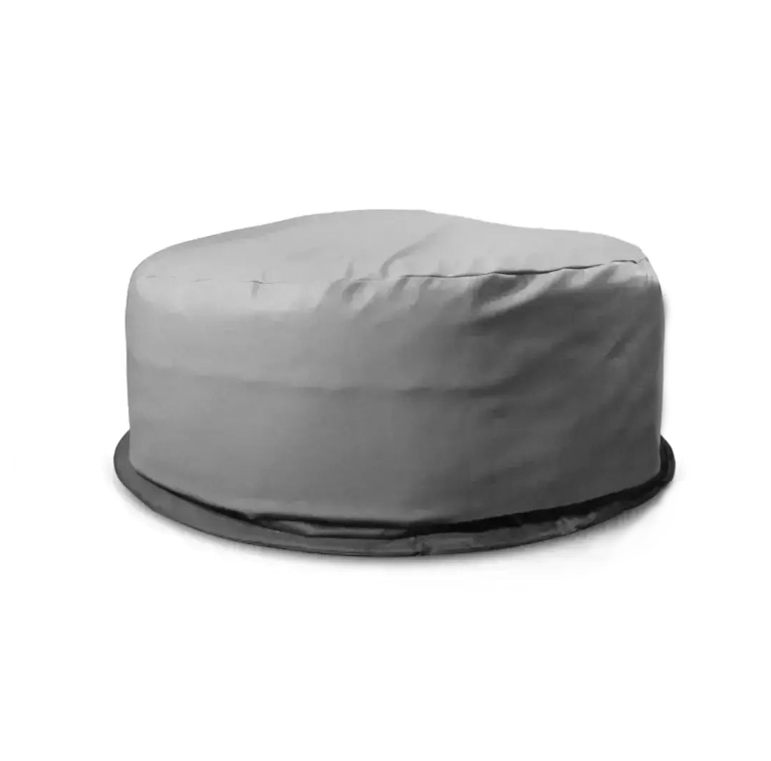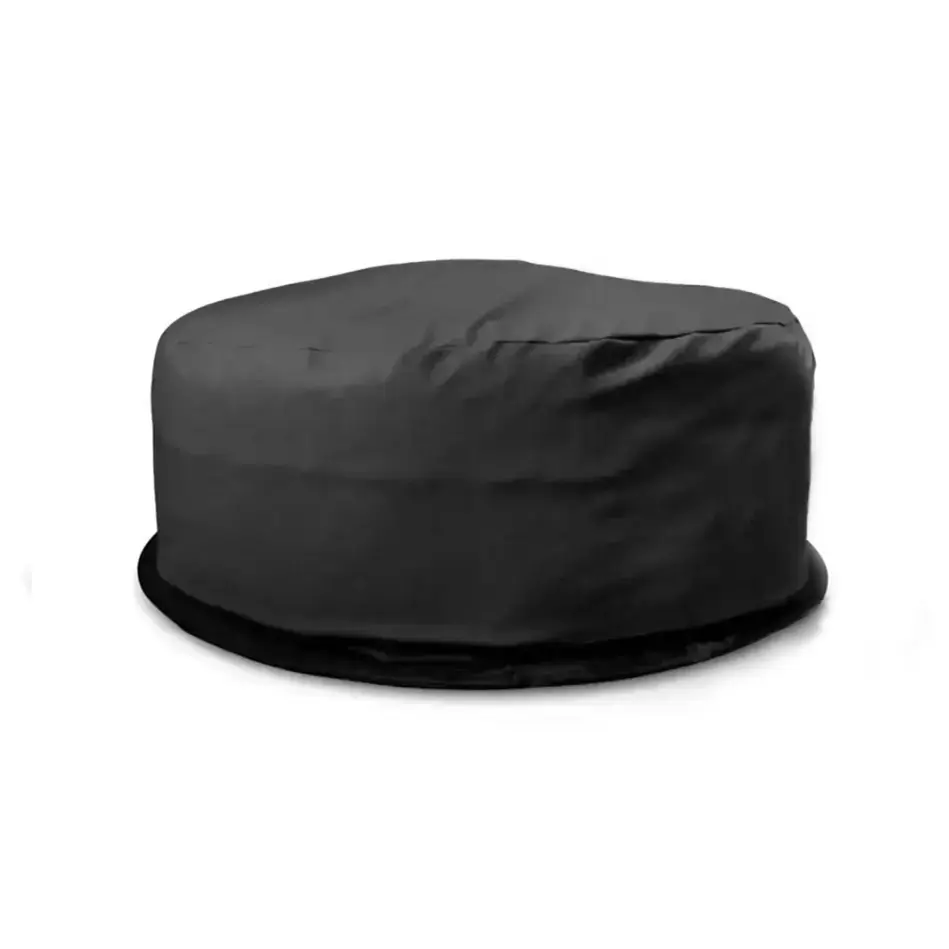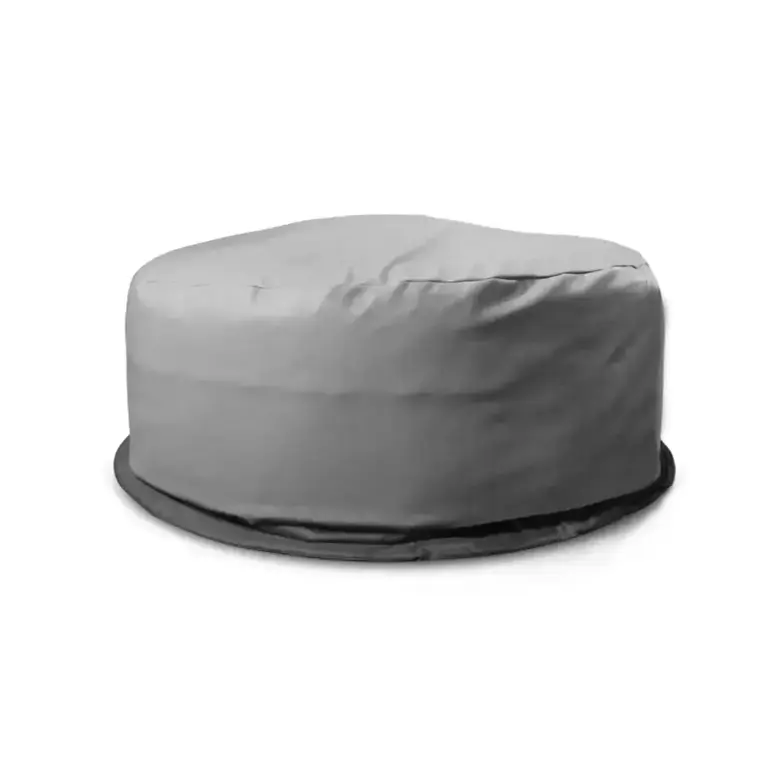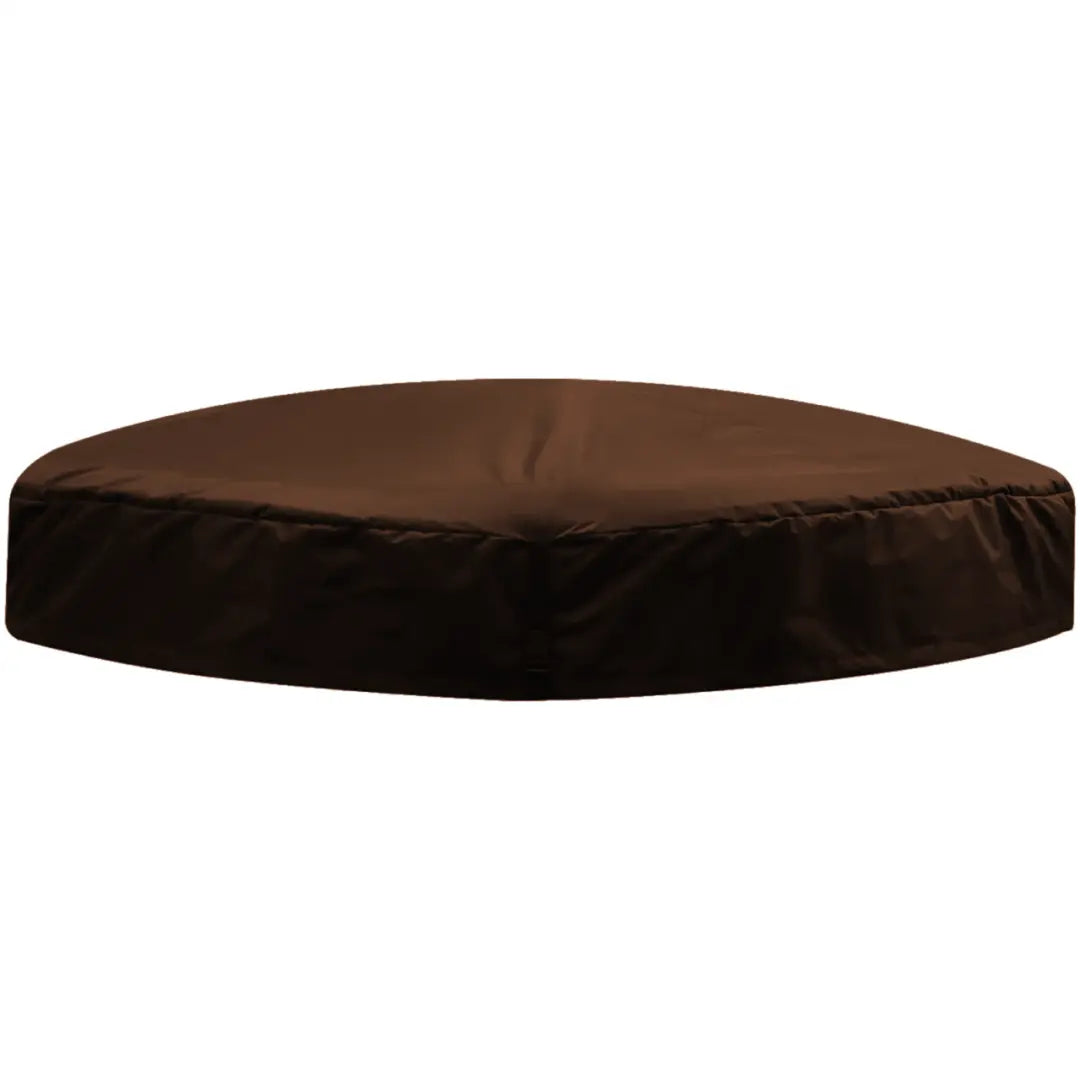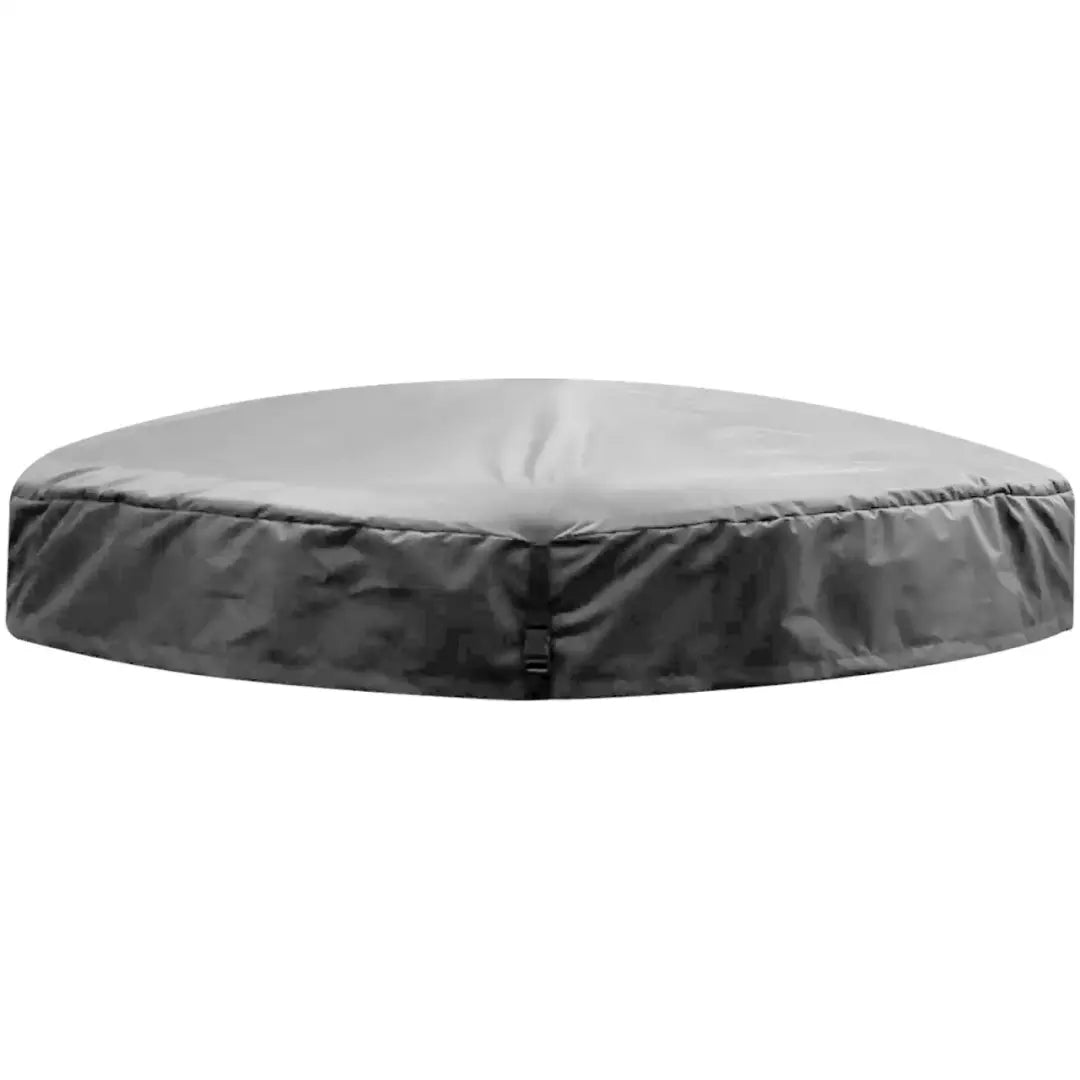"The purest and most thoughtful minds love colour the most," said John Ruskin, a wisdom seeker. While Ruskin celebrated colours, he likely didn't think of murky hot tub water. This murky shade is far from welcoming. It shows it's time to change the water. The signals are clear for when to change hot tub water. Whether it's water that's no longer clear, a strange smell, or signs of skin and eye irritation. These are clear signs you need to act fast to make the water clean again.
Hot tubs used to be a luxury but are now common in many British homes, offering a private relaxation spot. But, they need regular checks to avoid turning into a murky mess. Seeing signs of dirty water is more than an annoyance. It's a clear need for action for both fun and safety. It's vital to know when to change the water. This ensures everyone can safely enjoy the bubbling waters of your hot tub.
Key Takeaways
- Cloudy water visibility is a principal warning that the hot tub water needs an immediate change.
- Off-putting odours can be indicative of bacteria or chemical imbalances unseen beneath the surface.
- Skin and eye irritation are common symptoms of dirty hot tub water, often a result of inappropriate pH levels.
- A proactive approach to hot tub water maintenance is essential for preventative care.
- Regularly attending to hot tub maintenance will protect against health risks and extend the enjoyment of your relaxation haven.
Understanding Hot Tub Water Maintenance
Keeping your hot tub water maintenance on point is crucial for any owner. It ensures the spa stays a peaceful retreat. Good care makes the water clean and welcoming, avoiding the risks of overlooking maintenance. It's vital to grasp both water chemistry and regular upkeep. These are the main supports of effective hot tub water care.
Consistent testing is key, helping you monitor pH and alkalinity. These levels are important for maintaining clear, skin-friendly water. Keeping these levels right stops harmful bacteria, protecting everyone who uses the hot tub.
- Testing the water - a weekly task to stay informed on necessary chemical adjustments
- Altering pH levels - performing this delicate balancing act to prevent irritations and protect equipment
- Sanitising the water - using trusted products to exterminate microscopic trespassers
- Cleaning filters - a regular rinse or a deep clean maintaining their efficient defence
Understanding all about hot tub water care leads to fun, not bad memories of dirty water. This knowledge helps keep your hot tub appealing. It ensures a lasting friendship with leisure at your home.
Identifying Common Signs Change Hot Tub Water
Keeping an eye on your hot tub water quality is key for a safe and fun time. It's important to notice the signs that tell you it's time to change the water. We'll look into the clear signs that show when a water change is needed.
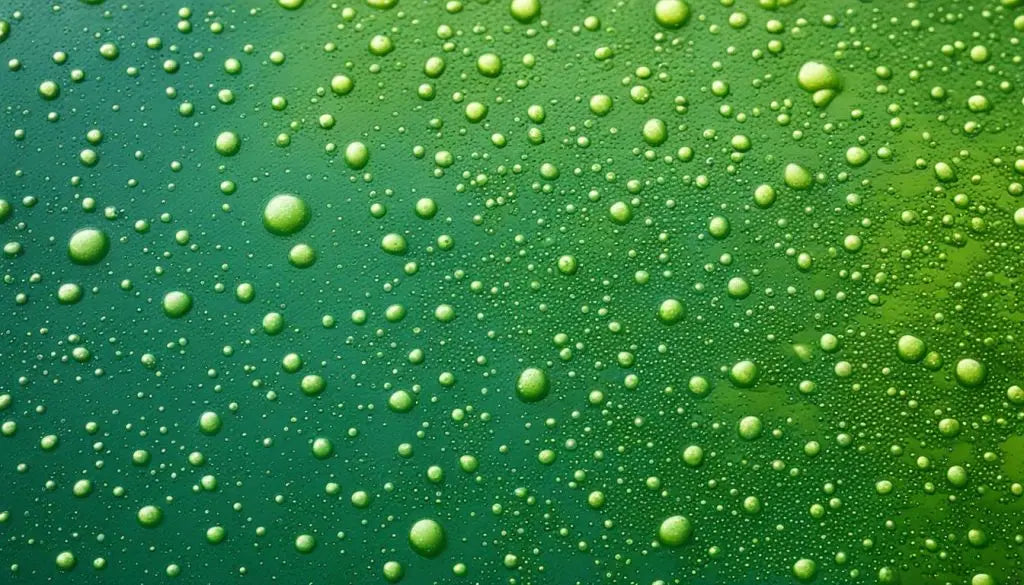
Cloudy Water Visibility
Cloudy water visibility is a clear signal your hot tub needs care. This murkiness can come from things like body oils, lotions, and bacteria. Not only does cloudy water look bad, but it can also be home to harmful microbes. A water change and proper cleaning can fix this, making your hot tub clear again.
Odour Signals Unseen Issues
A musty or bad smell from your hot tub means the water might be dirty. Smells mean bacteria or algae could be growing. This isn't just about the bad scent; it's a health risk. Changing the water or treating it is usually needed to get rid of the smell.
Skin and Eye Irritation from Imbalanced pH
Skin and eye irritation in users can signal it's time to change the hot tub water. This is often because the pH levels are not balanced. Keeping the pH balanced ensures user comfort and the hot tub's condition, promoting good health and hot tub longevity.
Algae Growth: A Clear Indication of Neglect
Algae in hot tub water is a big no-no. It shows we're not taking care of our hot tubs right. Warm water without regular cleaning invites algae growth in hot tubs. Algae not only looks bad but can also be a health risk.
It's crucial to deal with algae right away. If we don't, it will take over, leading to dirty filters and poor water quality. This could even harm your hot tub. Here are ways to stop and get rid of algae growth in hot tubs.
- Regular Water Testing: Always check your water. This helps stop algae from starting.
- Chemical Treatments: Use the right chemicals to keep the water clear and algae-free.
- Cleaning Routines: Clean and vacuum often to remove any early algae signs.
- Covering the Hot Tub: Keep it covered when not in use to cut down on sunlight. Algae need sunlight to grow.
Stay alert and use these steps to keep algae away. A clean hot tub is a spot for relaxing, not for algae.
Preventative Measures: Keeping Hot Tub Water Quality in Check
Keeping your hot tub water pure is about more than fixing problems when they pop up. It's vital to practise prevention measures for water care. This means setting up a routine to stop issues before they start.
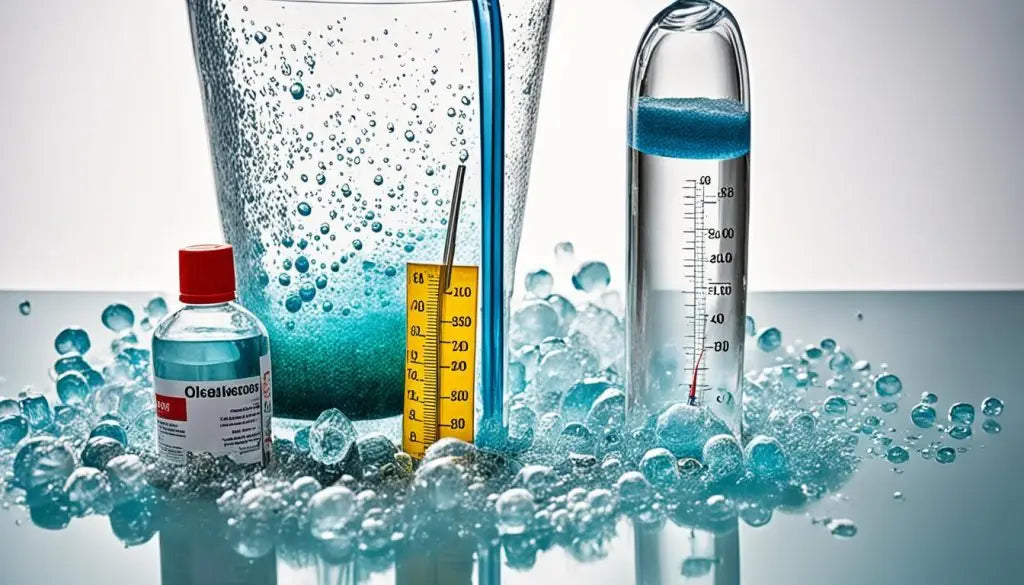
The key to hot tub water care is to check the water regularly. This helps spot any issues early on. Hot tub users should test the water a few times a week to keep everything balanced.
Regular Water Testing and Treatment
Various testing kits let owners keep a close eye on their hot tub's chemistry. This routine makes it easy to see when chemical changes are needed to keep the water clean. Here's a guide to what you need for keeping water perfect and safe.
| Component | Ideal Range | Importance |
|---|---|---|
| pH Level | 7.4 - 7.6 | Essential for comfort and efficiency of sanitisers |
| Total Alkalinity | 100 - 150 ppm | Acts to stabilise pH levels |
| Calcium Hardness | 150 - 250 ppm | Prevents water from becoming corrosive |
| Sanitizer Level | Varies by type | Kills bacteria and sanitises the water |
Understanding the Role of pH and Alkalinity
Knowing how pH and alkalinity work is central to hot tub water treatment. A balanced pH ensures sanitisers work well and the water is soft on skin and gear. Alkalinity keeps the pH levels steady, preventing cloudiness and scale.
With the right knowledge and preventative steps, your hot tub water will remain crystal clear. This makes your hot tub a relaxing and healthy place for everyone.
Hot Tub Cover and Insulation: Shields Against Contaminants
A hot tub cover is vital for any owner. It keeps out leaves, insects, and debris. It also saves energy by holding in the heat. To keep these benefits, you must look after it properly. Learn how to care for your spa cover to make it last longer.
Here are key steps to protect your hot tub's main guard and keep your insulation working well:
- Regularly clean your hot tub cover every few weeks to remove contaminants, with special attention if your spa is outdoors or used frequently.
- Apply a vinyl protectant that offers UV protection to the cover to minimise damage from the sun's rays and prolong its lifespan.
- Stay vigilant against water absorption in your cover, as it is a tell-tale sign of declining hot tub insulation efficiency.
- Ensure proper ventilation in the hot tub area to prevent mould and mildew, which could otherwise thrive on your spa cover.
- Regular inspection of the spa cover for signs of wear and tear is necessary to mitigate any potential damages early.
- A covered spa pool when not in use helps to maintain optimal chemical levels, conserve water, and assure safety.
- Employ proper techniques when lifting the cover to prevent damage to the hinge and the integrity of the foam core.
- Maintaining correct pH levels in your spa water is crucial not only for a perfect soak but also to prevent damage to the spa cover.
- Adapt your hot tub cover maintenance routine with changing seasons to handle specific challenges like snow, sun, and falling debris.
- After chemical treatment of water, ventilate the spa area well to protect the underside of the cover from chemical damage.
- Prevent pet-inflicted damage to your hot tub cover by setting up barriers, relocating stepping stones, and investing in cover lifters.
Remember, hot tub insulation and covers wear out over time. Replacing them is an investment in your hot tub's future.
| Maintenance Aspect | Benefit | Recommended Action |
|---|---|---|
| Clean hot tub cover | Debris removal, enhanced longevity | Clean every few weeks or as needed |
| UV protection application | Minimise sun damage | Apply vinyl protectant with UV filter |
| Inspection for wear and tear | Early identification of issues | Regular checks, prompt response to damages |
| Maintain water pH levels | Protection against corrosion | Regular water testing and pH adjustment |
| Ventilation post-chemical treatment | Prevent cover underside damage | Ensure adequate ventilation after treatment |
Proper care of your hot tub cover and hot tub insulation saves money and improves your spa time. Keeping the cover in good shape is key to hot tub care. For more on keeping your spa cover in tip-top condition, check out these hot tub insulation tips. They can help save both time and money.
Hot Tub Water Problems: Beyond the Cloudiness
Cloudy water is a clear sign you've got hot tub troubles. But, there's more beneath the surface. Issues like foamy water, scaling, and staining can also mess with your hot tub. Knowing about these helps keep the water just right.
Foamy water often comes from oils, lotions, or soaps. If your water's hard, you might get scaling, and stains could mean metal troubles. It's key for every hot tub owner to understand and tackle these problems. This keeps your spa clean and welcoming.
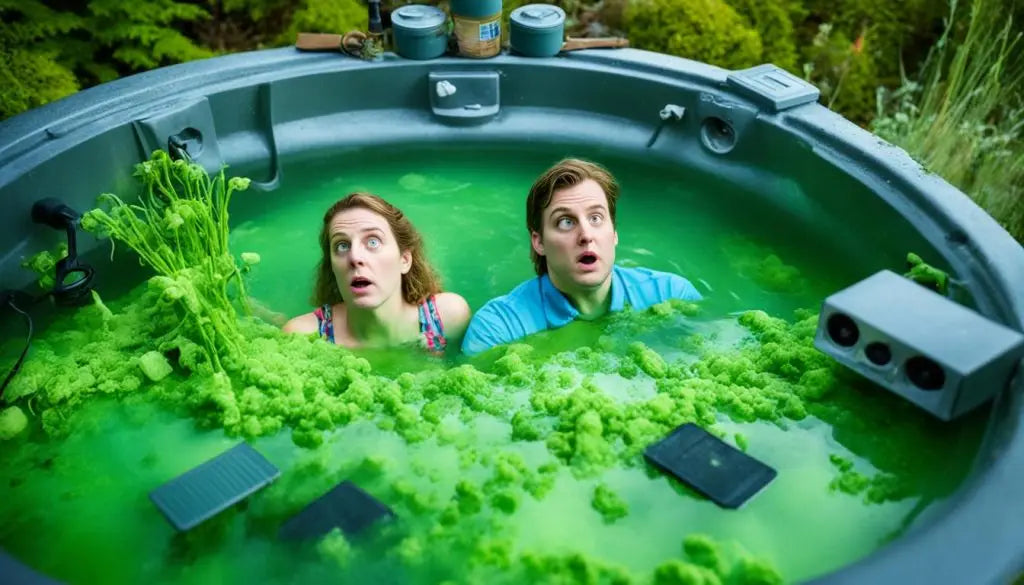
- Foamy Water:
- Caused by the buildup of substances such as body oils, lotions, and detergents.
- Use defoaming agents and make sure to shower before hopping in.
- Scaling:
- This happens when water's too rich in minerals, creating a rough residue.
- Softening your water and keeping chemical levels in check can prevent scaling.
- Staining:
- Metal in your water can discolour surfaces.
- To keep stains at bay, check your water’s pH and use metal sequestrants.
Getting to know these issues and how to deal with them makes hot tubbing more fun. Remember, stopping problems before they start maintains your water's sparkle.
The Importance of Sanitisers in Hot Tub Water Care
Keeping your hot tub's water clean is crucial for fun and health. Sanitisers are key in making water safe and welcoming. We'll look at sanitiser options and how oxidisers can improve water quality.
Chlorine Versus Bromine: Choosing Your Sanitiser
When picking a hot tub sanitiser, chlorine and bromine are top choices. They kill germs that could live in your tub. Chlorine works fast and is very effective, while bromine is less likely to irritate your skin.
| Aspect | Chlorine | Bromine |
|---|---|---|
| Sanitising Strength | High | High |
| Odour | Strong; can be potent | Softer; less irritative |
| Stability in Hot Water | Less stable; dissipates quickly | More stable; lasts longer |
| Skin Sensitivity | Can be harsh on sensitive skin | Milder; better for sensitive skin |
| Effectiveness in pH range | Effective in lower pH | Remains effective in a broader pH range |
Oxidising Agents: Enhancing Water Clarity and Health
Oxidising agents help keep hot tub water care top-notch. Using non-chlorine shocks clears the water by breaking down pollutants. This doesn't increase chlorine. So, your hot tub stays clear and healthy with regular use of oxidisers.
Knowing how each sanitiser behaves in hot tub water is important. Choose a sanitiser that meets your needs and your hot tub's for better water quality.
Routine Hot Tub Water Treatment: Key to Longevity
Routine hot tub water treatment is crucial for extending the life of your spa. It's essential to keep the water clean and safe. Regular testing and treatment make sure each soak is enjoyable.
Hot tub care is constantly changing, so understanding water chemistry is key. It's important to test the water, keep it free from germs, and clean filters. This helps prevent damage and ensures the water is safe.
Maintaining your hot tub is vital to protect your investment. Follow care guidelines to keep your spa running well. This will make sure your hot tub is a place of relaxation for many years.
FAQ
Q: What are the signs that indicate my hot tub water needs immediate change?
A: Signs your hot tub water needs changing include cloudy water, bad smells, and irritation of skin and eyes. This happens when the pH balance is off.
Q: How important is hot tub water maintenance?
A: Keeping your hot tub water in good condition is very important. It keeps the water safe and makes your hot tub last longer.
Q: What are the common signs of dirty hot tub water?
A: Dirty hot tub water usually looks cloudy, smells bad, and can irritate your skin and eyes.
Q: Why is cloudy water visibility an indication of dirty hot tub water?
A: Cloudy water means there are too many contaminants or the chemicals are not balanced. It shows your hot tub needs cleaning.
Q: What do unpleasant odours from hot tub water signify?
A: Bad smells mean there could be bacteria or contaminants in the water. It's a sign you need to clean your hot tub.
Q: Why does imbalanced pH level cause skin and eye irritation?
A: Wrong pH levels can irritate your skin and eyes, causing redness and itching. It's uncomfortable and bad for your health.
Q: Why is algae growth in my hot tub concerning?
A: Algae mean your hot tub's water quality is poor. It's harmful to health. You must fix and prevent algae to keep your hot tub safe.
Q: How can I prevent water quality issues in my hot tub?
A: Test and treat your hot tub water regularly. Keep the pH and alkalinity balanced. Clean the cover and insulation to stop problems.
Q: How does regular water testing and treatment help in maintaining hot tub water quality?
A: Testing and treating your hot tub keeps the water balanced and clean. It ensures your tub stays safe for everyone.
Q: Why are pH and alkalinity levels important in hot tub water maintenance?
A: pH and alkalinity levels help keep your hot tub water clear and stop skin irritation. Check and adjust them often.
Q: How does the hot tub cover and insulation protect against contaminants?
A: A hot tub cover keeps out dirt and saves heat. Good insulation keeps the temperature steady and lowers energy use.
Q: What are some other hot tub water problems beyond cloudiness?
A: Besides cloudiness, hot tub water can get foamy, have scale, or stain. This needs fixing to keep the water nice.
Q: Why are sanitisers important in hot tub water care?
A: Sanitisers kill bacteria and stop algae and other bad stuff. Choosing the right sanitiser makes your water clean and clear.
Q: What is the difference between chlorine and bromine sanitisers?
A: Chlorine and bromine are common choices for keeping hot tubs clean. Knowing their pros and cons helps you choose the right one.
Q: How do oxidising agents enhance hot tub water clarity and health?
A: Oxidising agents clean up organic junk, making your water clear. Use them regularly to keep your hot tub healthy.
Q: Why is routine hot tub water treatment crucial for its longevity?
A: Regular water care, like testing and cleanup, is key for a good hot tub. It helps your tub last longer.




